Cracking the New SAT with 4 Practice Tests, 2016 Edition (2015)
Part VII. Practice Tests
Chapter 27. Practice Test 4: Answers and Explanations
PRACTICE TEST 4 ANSWER KEY
Section 1: Reading
1.B
2.C
3.C
4.D
5.D
6.B
7.A
8.A
9.B
10.A
11.C
12.D
13.B
14.D
15.B
16.B
17.C
18.C
19.B
20.D
21.B
22.C
23.A
24.A
25.C
26.A
27.B
28.B
29.A
30.B
31.D
32.C
33.D
34.B
35.A
36.C
37.B
38.C
39.A
40.D
41.D
42.A
43.C
44.D
45.A
46.D
47.A
48.B
49.D
50.D
51.C
52.C
Section 2: Writing & Language
1.D
2.B
3.A
4.C
5.D
6.B
7.A
8.C
9.C
10.C
11.D
12.B
13.A
14.B
15.A
16.A
17.D
18.D
19.C
20.D
21.B
22.A
23.A
24.C
25.D
26.B
27.B
28.C
29.D
30.A
31.C
32.A
33.B
34.A
35.C
36.D
37.A
38.B
39.D
40.B
41.D
42.C
43.B
44.C
Section 3: Math (No Calculator)
1.B
2.C
3.A
4.B
5.D
6.C
7.D
8.D
9.A
10.B
11.A
12.D
13.C
14.C
15.B
16. or 3.75
or 3.75
17.2
18.36
19.![]() or 0.833
or 0.833
20. or 0.416 or 0.417
or 0.416 or 0.417
Section 4: Math (Calculator)
1.A
2.B
3.D
4.A
5.B
6.C
7.C
8.B
9.C
10.A
11.D
12.C
13.B
14.D
15.D
16.B
17.A
18.A
19.C
20.A
21.C
22.C
23.B
24.B
25.D
26.C
27.B
28.D
29.D
30.B
31.48
32.558
33.![]() or 3.5
or 3.5
34.16
35.30
36.0
37.195
38.15
PRACTICE TEST 4 EXPLANATIONS
Section 1: Reading
1. BThe author does not criticize readers for their reading choices; in fact, the author states in lines 84–85 that readers read Wheatley’s poems frequently. Eliminate (A). The author describes both the biographical details and complications of Wheatley’s life in lines 16–36, and Wheatley’s work and its complications in lines 70–83, which supports (B). Although the author does mention the work of other African American authors in lines 1–15, those works are not the primary purpose of the passage. Eliminate (C). Although the author does mention good deeds performed by John Wheatley lines 37–47, the author does not discuss him throughout the passage. Eliminate (D) as well.
2. CThe author states that Wheatley was freed in lines 58–59, so (A) is incorrect. While the author does mention that the Wheatley family allowed Wheatley to focus on her studies in lines 37–47, the passage goes on to discuss many hardships that Wheatley faced in lines 57–69, so it is not accurate to describe her life in only positive terms. Therefore, (B) is not correct. The author describes Wheatley’s poetic achievements as impressive in lines 48–56, but also points out aspects of Wheatley’s life that are complicated and not positive in lines 57–69. This evidence best supports (C). Although the author states that Wheatley did not view her enslavement negatively in lines 71–83, the author does not suggest that Wheatley did not think carefully about her opinions about her enslavement. Choice (D) is incorrect.
3. CThe correct answer for question 2 describes Wheatley’s life as impressive but with troubling or confusing aspects. Although (A) refers to unhappy events from Wheatley’s life, it does not indicate that her life was impressive. Eliminate (A). Choice (B) describes Wheatley’s impressive literary achievements, but it also does not describe aspects of her life that are troubling or confusing, so (B) is incorrect. Choice (C) alludes to the impressive aspects of Wheatley’s life, namely her literary success and eventual freedom. It also describes the more troubling aspects of her life like her poverty and struggles with racism and sexism. Therefore, (C) provides support for (C) in question 2. Choice (D) describes Wheatley’s literary importance but does not give details about her life, so (D) is incorrect.
4. DWhile the author states that Wheatley was sold to a wealthy family from Massachusetts in lines 22–24, the passage does not suggest that Wheatley gained any literary connections through the family, so (A) is incorrect. The passage does not make reference to Wheatley’s level of fame in Europe, so (B) is incorrect. In lines 84–85, the author states that Wheatley’s popularity is even greater today than it was before, so (C) is also incorrect. The author lists prominent people who admired Wheatley’s work in lines 48–56, and then goes on to describe aspects of Wheatley’s life that were difficult despite her literary popularity in lines 57–69. Therefore, (D) is the correct answer.
5. DThe correct answer for question 4 notes that in spite of being admired by prominent people Wheatley still had a difficult life. Choice (A) mentions the current popularity of Wheatley’s poems and her triumph over the odds, but the first set of lines in this answer discusses the African American tradition more generally, so (A) is not correct. Choice (B) discusses Wheatley’s enslavement and her positive opinions about it but does not discuss her popularity. Eliminate (B). Like (A), (C) refers to the current popularity of Wheatley’s poems and her triumph over the odds, but the first set of lines in the answer does not directly support the answer to question 4. Eliminate (C). Choice (D) describes the prominent figures who admired Wheatley’s work, as well as the difficult life circumstances that plagued her despite her literary fame; therefore, (D) provides the best support for the correct answer to question 4 and is the correct answer.
6. BFrederick Douglass is mentioned as someone who produced a slave narrative as opposed to a piece of poetry or fiction. This reference serves to provide contrast between Douglass’s writing and the writing of those who did not write slave narratives. Therefore, (B) is correct. The passage does not describe Douglass’s life story or compare his life to Wheatley’s, so (A) is incorrect. The passage does not indicate that Douglass’s or Wheatley’s writings have been incorrectly studied or categorized in literary history, so (C) is incorrect. The author does not describe any personal friendly connection between Douglass and Wheatley, so (D) is incorrect.
7. AIn the second paragraph lines 16–36, the author states that the exact circumstances are unknown, and then begins describing biographical details of Wheatley’s life. This indicates that the “circumstances” the author describes are related to the biographical details of Wheatley’s life. The author goes on to state that Wheatley scholars hypothesize that it was either modern-day Gambia or Senegal. This indicates that the specific details of Wheatley’s biography are being researched and debated by scholars and are not yet certain. This best supports (A). The passage does not discuss any unintended consequences of the actions described, so (B) is incorrect. The passage does not describe climate or weather conditions during this time, so (C) is not correct. Although the passage does refer to historical events in that the events of Wheatley’s life occurred in history, the passage seeks specific details of Wheatley’s biography instead of general historical context. Thus, (D) is incorrect.
8. AThe passage states in lines 41–47 that Wheatley had a special aptitude for the subjects she studied, and that her aptitude was so great that the Wheatleys allowed her to focus on these subjects. This best supports (A). While she had an interest in poetry, that interest is not the focus of this portion of the passage, so (B) is incorrect. This passage describes the Wheatleys’ kindness toward Wheatley in allowing her to focus on her studies, so (C) is incorrect. The passage does not indicate that the Wheatleys’ decision to facilitate Wheatley’s interest in academics was strange or confusing, so (D) is incorrect.
9. BThe passage describes John Wheatley as progressive in lines 37–41, and the author states that this term is a cruel oxymoron today. This indicates that there is a difference between how the term “progressive” was applied in Wheatley’s time and how it is understood today. The author continues this use of “progressive” in lines 65–69, explaining that Wheatley was freed in a “progressive” state. This would lead us to believe that her circumstances would be good, according to our current definition of “progressive.” However, Wheatley continued to face adversities, indicating that the term “progressive” was used differently in the two different periods. The author puts the word “progressive” in quotes to point out that the term was applied to situations that we might not consider progressive by our current definition. This best supports (B). The passage does not describe any of the “progressive” behaviors as remarkable achievements, so (A) is incorrect. The author does indicate that some of the circumstances in “progressive” situations were not entirely positive, but the author does not state that those negative circumstances must be described positively; in fact, the author goes on to explain that the circumstances that Wheatley faced were clearly negative. Choice (C) is incorrect. There is no quote from Wheatley’s work indicating she used the word “progressive” in her writing, so (D) is incorrect.
10. AIn lines 84–90 the author states that Wheatley’s story does not contain all the hallmarks of overcoming adversity that we might expect from a freed slave. This means that there are expected traits, or hallmarks, that we might expect to find in any freed slave’s story. Choice (A) matches this meaning well, as distinctive features would be features that would allow us to distinguish what type of story we were reading. Choices (B) and (C) do not provide a sense of distinguishing or marking a story, so eliminate them. Choice (D) is not better than (A), as the features mentioned are troublesomeand there is no indication in the passage that hallmarks must be troublesome. Therefore, (D) is incorrect and (A) is the correct answer.
11. CWhile the phrase It is wholly wrong to call the measure that we have taken Government control of farming suggests that Roosevelt is responding to the fact that people have indeed called the measure that, there is no evidence that the speech has anything to do with re-election campaigning. Eliminate (A). Roosevelt asserts that some progress has been made, so the plan has not been unsuccessful; eliminate (B). Roosevelt states that there is reason to believe things are a little better, and he also asserts that the policies are wholly within the purposes for which the government was established. This is consistent with (C). Roosevelt uses we when speaking about the problems the country faces and the actions the government has taken; he also offering an explanation, not seeking indulgence, so eliminate (D). The best answer is (C).
12. DThe correct answer to the previous question identifies Roosevelt’s purpose as reassuring the American public that the government’s plan is working and is a legitimate use of government power. Choice (A) provides context for Roosevelt’s speech by explaining how the first fireside chat worked; eliminate (A). Choice (B) provides details about what was happening two months ago, around the time of Roosevelt’s inauguration and so before his plan had been put into effect; eliminate (B). Choice (C) explains how Roosevelt plans to deal with the American people by being honest at all times, but that explains how he intends to talk, not what he is talking about or why. Eliminate (C). Choice (D) asserts that America is working toward a definite goal and that the policies Roosevelt has been discussing are wholly within purposes for which our American Constitutional Government was established. This supports (C) in the previous question well. Choice (D) is correct.
13. BThe passage states in lines 12–15 that the country was dying by inches. The passage then describes the reasons that the country was dying, which include factors like trade and commerce had declined to dangerously low levels. This indicates that the country was dying as a result of factors like the decline of trade and commerce, falling prices, foreclosed mortgages, and so on. These factors involve long-term trends and many various components that accumulated over time, indicating that the country was dying in a long-term way and not immediately. This means that the phrase by inches can be replaced by the phrase “not all at once,” and the correct answer must mean “not all at once.” While the factors in the country’s decline are detectable, they are not described using specific measurements, so (A) is not correct. Choice (B) matches “not all at once” and thus is the correct answer. Choice (C) indicates that the country was dying quickly or soon, which means the opposite of the phrase in question and is therefore not the correct answer. Choice (D) does not have anything to do with the speed of the dying and is thus incorrect.
14. DThe passage states in lines 18–20 that national institutions took their actions because of their great needs and not due to any criminal activity, so (A) is incorrect. While the national institutions were negatively affected by the value of commodities, the passage does not state that those institutions should not be dependent on the value of commodities, but rather that the value had become poor. Therefore, (B) is not correct. The passage does not refer to the economic theories behind the institutions’ decisions, so (C) is incorrect. The passage states that these institutions reacted to their negative situation by foreclosing mortgages, calling loans, refusing credit, which negatively affects those who would use mortgages, loans, or credit. This indicates that the institutions’ struggles caused unfortunate effects for investors, so (D) is supported by the passage.
15. BChoice (A) refers to Roosevelt’s intent to report his activities to the American public, but it does not refer to his thoughts about the institutions, so (A) is not correct. Choice (B) describes the circumstances that the institutions operated under and their subsequent actions toward investors, so (B) supports (D) of question 14 and is the correct answer. Choice (C) describes positive economic effects but does not describe the workings of institutions, so (C) is incorrect. Choice (D) describes negative economic possibilities but does not describe the workings of institutions, so (D) is not correct.
16. BThe passage is concerned with economic challenges and initiatives, not health initiatives, so (A) is incorrect. Roosevelt describes the specific challenges faced by the citizens in lines 20–27 and states that the challenge is not theoretical, so (B) is correct. Roosevelt states that theories are not involved in this challenge, and he doesn’t mention the work of economic theorists, so (C) is not supported by the passage. The passage does not state that there is no solution to the problem, and Roosevelt goes on to state that conditions are improving in lines 28–29, so the passage does not imply that the situation cannot be resolved. Therefore, (D) is incorrect.
17. CIn the lines 28–33, Roosevelt discusses the improved economic conditions but states that he is not going to proclaim that everything is resolved. He does not discuss politicians, so (A) is incorrect. While he is describing current economic conditions, he does not discuss theories, so (B) is incorrect. Roosevelt describes the current conditions positively but states that he will not assure the public that everything is resolved, which suggests that progress in the future will require additional attention. This indicates that the short-term gains are not guaranteed to be long-term gains as well, which marks a difference between the short-term and the long-term, so (C) is supported by the passage. Roosevelt does not discuss bankers or farmers, so (D) is incorrect.
18. CNote that this question contains the word EXCEPT, indicating that the correct answer will not be mentioned in the passage. In lines 28–33, Roosevelt states that the public has reason to believe that things are a little better, and then states several factors of the economy at the time. This indicates that these factors are proof that things are better, so they are factors that have improved. Roosevelt lists that railroads are carrying more freight, so (A) is stated in the passage and therefore not the correct answer. Roosevelt states that industry has picked up, which can include a rise in factory output, so (B) is stated in the passage and thus not the correct answer. Choice (C) is not stated as a factor in the economy’s growth, so (C) is the correct answer. Roosevelt lists that farm prices are better, indicating that crop prices have risen, so (D) is stated in the passage and therefore not the correct answer.
19. BIn the lines 38–42, Roosevelt states that he does not want the people to resume the ruinous practice…in the hope that a kind providence will find buyers at high prices. This indicates that Roosevelt fears the people will do something ruinous (and therefore bad) and hope that something kind (and therefore good) will result. Under normal circumstances, one must do something good to get a good result, and if one does something bad and gets a good result, it’s the product not of one’s actions but of unexpected luck. This means that providence must mean “luck,” and the correct answer must match “luck.” Choices (A), (C), and (D) do not match “luck,” and thus they are not the correct answer. Choice (B) matches the meaning of “providence” and is the correct answer.
20. DCheck each answer based on the information provided in the graph. Although the passage does refer to a “purpose,” the unemployment rate of 6.1% in 2008 is not the “all time low” rate on the graph. Eliminate (A). Since there was not a steady decrease throughout the 1940s, (B) must also be incorrect. At no point on the graph does the unemployment rate reach zero, so it has never “ended.” Choice (C) must also be incorrect. The graph does demonstrate that unemployment was higher in the 1930s than in later decades, so (D) is correct.
21. BCable refers to traditionists in lines 29–31; he makes a comparison between himself and traditionalists of the South. Comparing himself to traditionalists means he and the traditionalists must be different entities, so (A) is incorrect. In the blurb, it is stated that Cable is defending his previous article from attacks, and he states in lines 15–19 that his article has been attacked because it has been misinterpreted. This means that (B) is supported by the passage. While Cable’s article garnered disagreement, there is no indication that he caused social unrest, so (C) is incorrect. Cable says that his original article was grossly misinterpreted, and so he is not an objective observer but rather taking a side. Therefore, (D) is not correct.
22. CCable states in lines 15–19 that his earlier article has been misinterpreted because of greater social errors, not because the readers intended to be unfair; therefore, (A) is not correct. Cable does not mention the U.S. Constitution, so (B) is not correct. Cable states in lines 5–9 that his detractors believe civil equality will create social equality, which they equate with social chaos and consider undesirable. Therefore, (C) is supported by the passage. While Cable himself brings up legal technicalities in lines 59–67, there is no indication that his opponents also cite legal technicalities; therefore, (D) is not supported by the passage.
23. AChoice (A) refers to those who oppose Cable’s position as believing that civil rights are equivalent to social equality. This supports (C) in question 22, which was the correct answer for that question. Choice (B) states that nothing in Cable’s paper actually suggests anything about social privileges. While this answer may seem to support (A) from question 22, Cable never asserts that people refused to read his article carefully, only that his article was misinterpreted. Eliminate (B). Choice (C) refers to the fact that no laws can bring about social equality, which may seem to connect to (D) from question 22. But this sentence does not support the argument of those who oppose civil equality; it supports Cable’s argument. Eliminate (C) as well. Choice (D) argues that the people who oppose civil rights are actually the ones who are bringing about greater social equality, although unwittingly. This does not connect to any choices from the previous question, and so it cannot be correct.
24. ACable says in lines 19–23 that the misconstruction has occurred only among those whose thinking still runs in the grooves of the old traditions. Cable’s use of the word still indicates that the individuals he refers to as those hold thinking that is old, or that matches the previous mentalities of their group. Since their thinking is old, it must match the old traditions, so the phrase runs in the grooves of must mean “matches.” Therefore, the correct answer will mean “matches.” Choice (A) means the same as “matches,” so it is the correct answer. Choice (B) hints that the current thinking moves into alignment with the old traditions, not that it has matched the old traditions all along; thus, (B) is not the best answer. Choices (C) and (D) both indicate that the thinking does not match the old traditions, so (C) and (D) are not correct.
25. CCable states in lines 29–33 that the North, West, and East want the same things that the South wants. The discontent that the South is feeling is therefore not unique to an individual region, so (A) is not correct. Cable does not state that the other regions have accepted his view, so (B) is incorrect. Cable groups all four regions together to indicate that all regions agree on this particular issue; in fact, he claims that the rest of the intelligent world agrees as well, suggesting that all people agree on this matter. Therefore, (C) is supported by the passage. Cable does not suggest that any region is more intelligent than another, so (D) is not correct.
26. ACable describes the distinctions made by his detractors as arbitrary, cheap, and artificial in lines 39–46, indicating that their efforts are ill-advised and do not improve upon the natural system. He goes on to state that these efforts are absolutely needless because the social order will regulate itself. This means that (A) is supported by the passage. Cable states that the delicate machinery is being tampered with, so he does not praise the current state of affairs. Thus, (B) is not correct. While Cable does describe society’s features in figurative terms, his purpose in describing them is not for the sake of using figurative language, but rather for the sake of better explaining why his detractors are wrong. Therefore, (C) is incorrect. Cable describes the features of a social system, but not a government system, so (D) is not correct.
27. BChoice (A) refers to Cable’s readers’ belief that recognition of rights would generate social chaos, which would seem to connect to (A) of question 26. However, in the lines in question, Cable’s readers claim to be on the side of social order, while Cable says that they are violating natural social order. Therefore, (A) is not correct. Choice (B) states that Cable’s detractors are making plans that are unnecessary in a society that has a good natural order, so (B) supports (A) of question 26 and is the correct answer. Choice (C) concerns Cable’s distinction between civil rights and social privileges, which is not mentioned in the answer choices of question 26 and is thus not the correct answer. Choice (D) discusses the concept of family rights, which is not mentioned in the answer choices of question 26 and is therefore not correct.
28. BCable speaks of his opponents in lines 52–58, stating that he does not charge any bad intention or conscious false pretense on their part. He asserts that his opponents did not have bad intentions, and he does not make any rude or mocking statements toward them, so (A) is not supported by the passage. After Cable states that his opponents had good intentions, he goes on to introduce his point about the differences between rights and social amenities, which he will continue to expound on for the remainder of the passage. Therefore, (B) is correct. Cable does not provide a summary of the previous arguments or use the same language he had been using, so (C) is incorrect. Cable does not close the argument, but rather continues discussing the matter for the remainder of the passage, so (D) is not correct.
29. ACable states in lines 72–73 that civil relations are determined by laws, and in matters of social relations, everyone consults his own pleasure. This indicates that there is a difference between civil and social relations, and that social relations are not governed by laws. By pointing out that everyone consults his own pleasure, Cable suggests that opinions about social relations will differ from person to person, which means that individuals will make their own decisions about social relations. This means that everyone consults his own decision-making judgment to determine social relations. Therefore, a good synonym for pleasure is “decision-making judgment,” and the correct answer must match “decision-making judgment.” Choice (A) matches that synonym, so (A) is correct. Choices (B), (C), and (D) do not match “decision-making judgment,” so (B), (C), and (D) are incorrect.
30. BCable describes the difference between civil and social rights in lines 59–68. He states that there are no such things as social rights and explains that rights are connected only to civil relations. He cites specific laws regarding family relations to provide concrete examples of the difference. He also states specific rules such as All that go by personal choice are Social relations to create concrete guidelines for understanding the issue. His tone is clinical and particular, which means (B) is supported by the passage. He is not aggressive or angry, so (A) is not correct. While Cable does not agree with his opponents, he does not focus on criticizing their side, but rather on explaining his own in legal terms, so (C) is not the best answer. Cable does not agree with his opponents, so (D) is incorrect.
31. DNote that this question contains the word EXCEPT, indicating that the correct answer will not be mentioned in the passage. Cable describes the difference between civil and social rights in lines 58–68. He states that the one is all of right, it makes no difference who we are; the “one” is the former of the two types of relations he discusses, which is civil relations. Therefore, his definition of civil rights extends to all people regardless of who they are. Thus, (A) is in the passage and is not the correct answer. Cable states that for the one we make laws, and as before, the “one” is the former of the pair he discusses, meaning civil rights. Therefore, civil rights can be determined by law, so (B) is in the passage and is not the correct answer. Cable states that social relations go by personal choice,meaning that they are not governed by the same laws as civil rights. Thus, Cable’s definition of civil rights includes nothing about social interaction, so (C) is in the passage and is not the correct answer. Cable specifies that interactions based on personal choice are Social relations, meaning that they are not counted among civil rights. Therefore, (D) is not part of the definition of civil rights, and is thus the correct answer.
32. CThe passage mentions primate ancestors to set up a direct contrast with modern humans. Choice (C) is the best answer since this paragraph discusses how humans walk on two limbs instead of four. Eliminate (A) since no mention is made about written history. Choice (B) is also incorrect since monkeys are not mentioned in this paragraph. Eliminate (D) since this question is not answered until later in the passage.
33. DThe second sentence in paragraph 2 states that the advanced intelligence of the early human ancestors meant that they had more uses for their two free limbs, so (D) is a good match since the paragraph later uses carrying groceries as an example. Choice (A) is incorrect since no mention of strength is given. Eliminate (B) because it’s nonsensical; the author is not suggesting any animals that walk on four legs go grocery shopping. Eliminate (C) because no criticism is offered. Choice (D) is the best answer.
34. BCross out the word manually and use the context in this sentence to come up with your own word or phrase that would be a good replacement. The passage states that early human hands evolved to have more dexterity than feet, so a good replacement would be something involving use of the hands. Choice (B) is the best fit.
35. AThe author states that human evolution, in this sense, can be seen as the evolution of human handiness, so find an answer choice that links these two ideas. Choice (A) is a good fit, so hold onto it. Choice (B) is incorrect since it’s too extreme to say that early humans’ hands were useless. Choice (C) is also incorrect since the 4 to 7 million-year range marks how long humans have diverged from primate ancestors, not how long our dexterity took to evolve. Choice (D) is never suggested, so eliminate it. Choice (A) is the best answer.
36. CChoice (A) introduces the topic of bipedalism, rather than handiness. Since this does not support any of the choices from question 35, eliminate it. Choice (B) refers to handiness and its accompanying capacity for greater tool use than is possible using feet. This does not support any of the choices from question 35 directly. Although (D) from question 35 does compare hands and feet, it is in regards to writing rather than other tools. Eliminate (B). Choice (C) states that the increase in humans’ use of hands occurred along with an increase in human intelligence. This directly supports (A) from question 35. Although (C) also does reference writing with hands versus feet, these lines do not support (D) in question 35 because the lines clearly state an association between handiness and intelligence. And although (D) might seem to support (C) from question 35, it does not. Choice (D) states that the split from the nearest human ancestors took 4 to 7 million years, not the development of handiness. The best answer is (C).
37. BCross out the word brook and use the context in this sentence to come up with your own word or phrase that would be a good replacement. This sentence is suggesting that it’s illogical to think that humans just one day decided to walk on two legs, so reason would not permit such a connection. Replace brook with “permit.” Choice (B) is the best fit. Be careful with (A), which is a trap answer; though it is a synonym for one meaning of brook, it is not the meaning needed here.
38. CThe third paragraph of this passage suggests that energy is the reason humans walk on two limbs as opposed to other animals. This contrasts the information in the first passage, so find an answer that matches this information. The author does not question putting monkeys on treadmills, so eliminate (A). Choice (B) is also incorrect since the author never criticizes the author of Passage 1, so get rid of it. Choice (C) is a good fit since the paragraph offers another explanation for bipedalism. Choice (D) is out of scope, so eliminate it. Choice (C) is the best answer.
39. AUse POE to find an answer that is consistent with the information in the passage. Choice (A) is a good fit since paragraph 3 states that chimpanzees are humans’ closest living ancestor but that energy use explains why humans walk on two legs whereas chimpanzees will sometimes walk on four. The author of Passage 2 doesn’t reject Darwin’s theory but just says it’s incomplete, so eliminate (B). Eliminate (C) since that’s the opinion of the author of Passage 1. Choice (D) is also incorrect since this issue is not resolved. Choice (A) is the best answer.
40. DChoice (A) references the issues with Darwin’s theory. This appears to support (B) from question 39. However, (B) from question 39 is too extreme; it states that the author rejects Darwin’s theory when it is stated later in the passage that Darwin’s theory is not necessarily wrong. Eliminate (A). Choice (B) does not connect to any of the choices from question 39, as it clearly states that the cause of bipedalism is unknown. Eliminate (B). Choice (C) appears to support (D) from question 39, but this line merely references a study done in 2007; it does not state that the debate surrounding human bipedalism was solved in that year. Eliminate (C) as well. Choice (D) clearly supports (A) from question 39, as that line contains humans’ closest living ancestor. Choice (D) is the best answer.
41. DUse POE to compare information from both passages. Choice (A) is incorrect since neither author suggests this, so eliminate it. Eliminate (B) as well since this information is contradicted in Passage 2. Passage 2 says nothing about grocery shopping, so get rid of (C). This leaves (D), which is supported by both passages since it’s the main thesis of Darwin and the author of Passage 1. The author of Passage 2 says that this argument is incomplete, but not necessarily incorrect. Choice (D) is the best answer.
42. AUse POE to find an answer choice consistent with the information in the passage. Choice (A) works, because Passage 1 uses the analogy of grocery store shopping and Passage 2 cites that three researchers studied the various perambulatory habits of chimpanzees (humans’ closest living ancestor) and humans. Choice (B) is incorrect since Passage 1 never dismisses scientific research. Eliminate (C) because Passage 1 never introduces scientific research. Eliminate (D) as well since the author of Passage 2 doesn’t dismiss any research after Darwin’s, and he calls Darwin’s theory incomplete. Choice (A) is the best answer.
43. CIn lines 1–3, the author opens with an assertion about the link between a mother and child and raises the issue of new research that expands our understanding of that link. The author does not acknowledge the reader’s personal experiences with the topic, so (A) is not correct. The author does not suggest that the idea of the closeness of mothers and children is incorrect; in fact, the author goes on to describe a physical connection even deeper than anyone thought. Therefore, (B) is incorrect. The author goes on to add new information to the topic, so (C) is correct. The author does not discuss fathers, so (D) is incorrect.
44. DWhile the author argues in lines 35–37 that our understanding of our bodies as unique beings is a misconception, this is not where the author’s argument starts. Moreover, the author does not offer a specific solution to this misconception, but ends with statements that are merely “possible,” as in lines 72–85. Therefore, (A) is not supported by the passage. The author does not present his own original research, so (B) is incorrect. While the author does mention new research in line 2 and describes that research elsewhere in the passage, he does not claim this research is inconsistent, so (C) is not correct. The author begins in lines 1–8 with information that is accepted as true, and then in lines 25–27 introduces new information related to that truth and then, in the last two paragraphs, discusses some aspects that are still unknown about the new information. Therefore, (D) is supported by the passage.
45. AThe author’s overall focus in the passage is on the exchange of cells between unique individuals, and (A) summarizes the information provided. It is well supported by the passage. Choice (B) is not supported by the passage, which notes that there were fewer fetal-derived cells in women with Alzheimer’s. While the author does state that the reasons for the results found in the new study were unclear, the primary purpose of the passage is to relate information about microchimerism, not to comment on the nature of scientific research generally, so (C) is incorrect. The passage adds to the understanding of the profound link between mother and child; because the new information does not contradict the idea that the bond is deep, (D) is incorrect. The correct answer is (A).
46. DIf we are accustomed to thinking of ourselves as singular, and the foreign cells within us belie that notion, then autonomous must mean something like “operating without being affected by others.” Additionally, the previous paragraph mentions that these foreign cells may affect our functioning and that’s a fact we’d find surprising. Choice (B) is incorrect, since reliant is the opposite of the sort of word needed. Choices (A), (C), and (D) are very similar in meaning, but only (D) can have the sense of operating entirely without outside interference, so (D) is the correct answer.
47. AThe author states that women who had Alzheimer’s disease are less likely to have male cells in their brains in lines 25–34. This suggests that male cells may help protect women’s brains from disorders like Alzheimer’s. This means that (A) is supported by the passage. The author suggests that foreign cells may spark immune disorders in lines 16–18, but the author does not state that cells may make women less likely to have immune disorders, so (B) is incorrect. The author never mentions aggression or physical strength, so (C) is not correct. The author does not state that women with male cells in their brains will live with men for a long time, so (D) is not correct.
48. BChoice (A) contains information on immune disorders, which seems to support (B) from question 47. However, this line is from a part of the passage that is discussing cells in general—not male cells specifically. This means that (B) from question 47 is not correct, and this answer can be eliminated. Choice (B) discusses the fact that dormant male cells were less common in the brains of women who had Alzheimer’s disease, which would imply that women with more of these cells would be less likely to have that disease. This supports (A) from question 47. Choice (C) discusses the discovery of the dormant male cells, but does not directly relate to any choice from question 47, so it can be eliminated. The same is true of (D); it discusses how microchimerism occurs but does not relate directly to any choice from question 47. The best answer here is (B).
49. DThe author does not discuss disorders that cause people to avoid strangers, so (A) is incorrect. The author does not discuss children’s ability to help their parents through difficult times, so (B) is not correct. The author states that our bodies harbor cells from other people in lines 36–37, but this does not mean that individuals are not unique in any way, so (C) is not supported by the passage. The author states that our bodies contain cells from other people, so the concept of total individuality, having only our own unique cells, may not match the evidence of other people’s cells in our bodies. Therefore, (D) is supported by the passage.
50. DThe author does not discuss the mother’s genetic makeup or the theory that the mother’s transmission of her genes constitutes cell exchange, so (A) is not correct. The author does not discuss siblings being present for each other’s illnesses, so (B) is incorrect. The author references memory disorders (Alzheimer’s) but does not discuss siblings’ experience of memory disorders, so (C) is not supported by the passage. The author states in lines 78–81 that cells from an older child may remain in the mother’s body and pass to the younger sibling during the younger child’s gestation. Therefore, (D) is correct.
51. CChoice (A) explains the fact that a woman could not produce her own male cells. Since this has nothing to do with non-twin siblings as were asked about in question 50, eliminate (A). Choice (B) references Alzheimer’s disease, which may seem to relate to either (B) or (C) from question 50. However, this choice also does not mention anything about non-twin siblings, so eliminate it as well. Choice (C) does state that even non-twin siblings may swap cells while developing separately within the same mother, which strongly supports (D) from question 50. Choice (D) is concentrated on cell competition between grandmother and child cells within a mother, but not between non-twin siblings. The best answer is (C).
52. CSince the answer must be true based on both the graph and the passage, check the answers against both one at a time. Choice (A) states that the mother’s cells would be found in her infant, but the graphic clearly shows that brain cells come from fetal origin, not mother origin. Eliminate (A). The graphic does not contain any information about amounts of cells, only the origin from which they are produced, so (B) should be eliminated as well. Choice (C) is supported by both the graphic, which shows that brain cells come from fetal origin, and the passage, which clearly states that fetal cells have been found in the brain of the mother. Choice (D) does note that there are fewer areas of cell origin in mothers than fetuses, and the passage does mention immune disorders. However, (D) is in no way proven by either the graphic or the passage based on the information provided. The best answer is (C).
Section 2: Writing and Language
An Official, Certified…
1. DWhenever you are given the option to delete, determine whether the underlined portion serves a precise role within the passage. The sentence begins with the phrase of late, so the underlined portion is redundant. Eliminate (A). Get rid of (B) and (C) as well, since they are also redundant. Choice (D) is the best answer.
2. BThis sentence is describing the typical image of hackers. Since the first sentence begins with the phrase the image, the description of that image should come immediately after sentence 1. Choice (B) is the best answer.
3. AThe question asks for the best link between the two paragraphs. The first paragraph is focused on the past image of hackers, and the second paragraph is focused on the present image of hackers. Choice (A) works as it addresses how the image of hackers has changed. Eliminate (B) and (C) because neither federal crime nor identity theft has been discussed in the previous paragraph. Also eliminate (D) because the first paragraph doesn’t evaluate whether the lifestyle is attractive or not. Choice (A) is the best answer.
4. CSince the question is asking for the LEAST acceptable alternative to the underlined portion, the word authenticity is correctly used. Find and eliminate all answers that are similar to authenticity, which means “the quality of being genuine.” Legality is the only one that doesn’t fit since it means “observance of law,” so (C) is the best answer.
5. DThe underlined portion of this sentence is a pronoun, so make sure it is consistent with the non-underlined portion by finding the other pronouns and nouns. The partner noun is counterparts, which is plural. Eliminate (B) and (C) since both are singular. Since counterparts is a reference to non-CEH hackers, the first-person pronoun in (A) doesn’t work here. Choice (D) is the best answer.
6. BLook at the answers to see that comma usage is being tested. Check to see if the phrase Certified Network Defense Architect is necessary or unnecessary information. If that phrase were removed from the sentence, the sentence would still make sense, so the phrase is unnecessary information. Commas should always be placed before and after unnecessary information, so (B) is the best answer.
7. AOn proposition questions, make sure the phrase has some precise and definable role within the sentence or passage. The information about the U.S. government agents appears to be relevant to the passage, but use POE to check the answers to be sure. Keep (A) since its role is to indicate the difference in the tests. Choice (B) doesn’t work since national security is not focused on in the passage. Eliminate (C) because this information is not mentioned earlier in the passage. Choice (D) is also incorrect because it’s never stated that hacking is a problem only in the United States. Choice (A) is the best answer.
8. CSince there are periods and semicolons in the answer choices, this question is testing STOP punctuation. Use the Vertical Line Test, placing the line between one and typically. Eliminate (A) and (D), since a period and semicolon are both STOP punctuation and cannot both be correct. Also, the adverb typically should not be placed after what it’s modifying. Eliminate (B) because the commas are separating two complete ideas and that is not one of the situations in which to use a comma. Choice (C) is the best answer.
9. CThe answer choices indicate that verb tense is being tested, so let the non-underlined portions guide your choice of verb. Present tense is seen in We want you to hack us, says that organization, so (C) is consistent. Eliminate (A) and (D) since both use the past participle. Choice (B) is also incorrect since it’s past tense. Choice (C) is the best answer.
10. CEven though the phrase “It takes a crook to catch a thief” is used in the passage, that use does not mean that a film referencing the phrase is relevant to the passage; eliminate (A) and (B). Since (D) implies that the film has some relevance to this passage, it should be eliminated as well. Choice (C) is the best answer.
11. DWhen prepositions are changing in the answer choices, the question is most likely testing conventional expression. The correct wording of the underlined phrase is contradiction in terms. Therefore, eliminate (A), (B), and (C).
Taking Stock of Modern Investing
12. BNotice the question! The paragraph has a fairly conversational tone overall, so only (D), with the phrase as all get-out, seems to carry that tone too far. In style, the paragraph is casual but with clear focus on the idea of how time can be a funny thing. The immediately preceding sentence is an example of how one can study for what feels like hours while only 40 minutes have actually elapsed. Therefore, the correct answer will have to deal with time. Choice (B) is the only answer that references a time period. All of the other choices have irrelevant information, so (B) is the best answer.
13. ASince a verb is underlined, make sure it is consistent with the non-underlined portion. Is is singular and its partner, the subject each, is singular as well, so they are consistent with each other in number. Be careful with the phrase of these since it’s not the subject but a prepositional phrase, which can never be the subject of the sentence. Eliminate (B) and (D) since both are plural. Compare (A) and (C), and notice that the verb must be in present tense in order to maintain consistency with the rest of the paragraph, which makes (A) the best answer.
14. BThis sentence is making a comparison between the time scales of computers and humans. This means the correct choice will use a pronoun that is possessive to ensure that like things—in this case, the time scale of computers and our time scale—are being compared. Eliminate (A), (C), and (D). Choice (B) is the best answer.
15. AUse POE and check each answer to see if it is consistent with the passage. Choice (A) works because these descriptions clarify what the work of computers actually is. Choice (B) goes too far, since the given list is not a complete list, and (C) is too broad because the passage isn’t really talking about the intrusion of technology into human life. Eliminate (D) as well because these descriptions are not discussed in the next paragraph. Choice (A) is the best answer.
16. AUse POE on each answer choice since there isn’t a clear grammar rule being tested here. The underlined portion doesn’t appear to break any rules, so keep it. Eliminate (B) since it’s in the passive voice. Choice (C) changes the meaning of the sentence by rearranging the words field and mind. Choice (D) is extremely wordy and awkward. Choice (A) is the best, most concise answer.
17. DSince there is STOP and HALF-STOP punctuation in the answer choices, use the Vertical Line Test. The phrase leading up to the semicolon is an incomplete idea, so the semicolon is wrong. Eliminate (A). Also eliminate (B) because a period is also STOP punctuation. A dash (HALF-STOP punctuation) must come after a complete idea, so (C) can be eliminated. One use for a comma is to separate an incomplete and complete idea (GO punctuation), so (D) is the best answer.
18. DUse POE and check each answer choice against the graph. The vertical axis of the graph is in the time unit of years, so clearly the average holding period of a stock in 1920 was not less than 22 seconds. Eliminate (A). The average holding period peaked in 1940 according to the graph, so eliminate (B). Choice (C) is irrelevant, so get rid of it. Choice (D) is consistent with the graph, so it’s the best answer.
19. CThe sentence begins by discussing troubling permutations and then compares investing in the stock market to gambling at the poker tables. Since this is an unusual comparison without the quotation marks, use POE to find an answer that explains the necessity of the quotation marks. The quotations are being used for a reason, so eliminate (A). There is no indication that the author wants a different word, so get rid of (B). Choice (C) accurately explains the quotation marks’ use, so keep it. Eliminate (D) because no investor is quoted in the passage. Choice (C) is the best answer.
20. DThe question is asking for the LEAST acceptable alternative to province, so province is used properly in this sentence. In this context, province means “field of activity,” so find and eliminate all other answers that are similar in meaning. Only (D) is different, since state refers to “a condition or status,” so (D) is the best answer.
21. BA pronoun is underlined in this sentence, so make sure the pronoun is consistent with the non-underlined portion of the sentence. The noun partner for your is human traders, which is inconsistent, so eliminate (A). Look for a third-person, plural pronoun to match the partner, and (B) will be the best answer.
22. ALook at the answer choices to see that the question is testing commas, so use POE to see if they are used properly. Eliminate (B) and (D) since there is no reason to pause the flow of the sentence after trend. Compare (A) and (C); the only difference is the commas before and after probably in (C). This is excessive usage, so eliminate it. Choice (A) is the best answer.
23. AThis question is testing comma usage involving lists, so find the answer in which a comma is used after each item in the list and before and. Choice (A) places a comma after murder and theft, and before the conjunction and, so it’s the best answer.
24. CThe answer choices contain STOP and HALF-STOP punctuation, so use the Vertical Line Test. Choice (B) is incorrect since STOP punctuation (the semicolon) can only separate two complete ideas, and guilt and innocence is an incomplete idea. Eliminate (A) because it alters the meaning of the sentence; the commas suggest that issue, guilt, and innocence are all items in a list of three things. Choices (C) and (D) could work since they use a colon to separate a complete idea before the colon from an incomplete idea after it. Since there are only two things in the list, no comma is needed before the and that joins them, so eliminate (D). Choice (C) is the correct answer.
25. DNotice the question! The second paragraph immediately begins describing Morris’s story, but no mention is made of him in the previous paragraph. The correct answer must mention Morris. Eliminate (A) and (C). Get rid of (B) as well since the next paragraph is detailing a specific film by Morris, not his entire filmography. Choice (D) is the best answer.
26. BSince a comma comes after the name Randall Dale Adams, the description that follows must apply to Adams. Choice (B) is the only answer that does this. Additional information in the paragraph indicates that Adams is the one who was charged with the crime, so (B) is the best answer. Remember that the correct choice will always feature phrases that are as precise as possible.
27. BNotice the question! The previous phrase before the underlined portion of this sentence is many of those involved, so the correct answer must list who these many are. Eliminate (C) and (D) because neither details who was involved in the case. Compare (A) and (B); (B) is the better answer because it’s clear and concise.
28. CSince the question is asking for the LEAST acceptable response to the underlined portion, anarchy is properly used. Anarchy means “disorder due to lack of authority,” so eliminate any other answer choice that means this. Tyranny doesn’t fit since it means “oppressive authority,” so (C) is the best answer.
29. DCheck each answer choice to find the answer that is consistent with the graph. Eliminate (A) since Morris’s film was released in 1988 (see the correct answer for question 25), and the number of verdict reversals did not peak that year. Get rid of (B) since there is no mention in the graph of repeated attempts at reversals. Choice (C) is wrong because in 1989, the reversal ratio was 40%. Choice (D) works because Morris’s film was made in 1988 and the percentage of verdict reversals decreases in the subsequent years. Choice (D) is the best answer.
30. ALook at the answer choices and notice the change in transition words. The sentence is clearly contrasting Koenig’s stated purpose with her identification of a degree of uncertainty about the trial’s verdict, so find a contrasting transition word. Get rid of (B) because without a transition word, the sentence would have two complete ideas connected by only a comma (GO punctuation). Choice (D) has the contrasting transition however, but the sentence would then have two complete ideas with only a comma to connect them, so eliminate (D). Also eliminate (C); because should be used when two parts of the comparison agree, not when they contrast. Choice (A) is the best answer.
31. COn proposition questions, make sure the word or phrase has some precise and definable role within the sentence of passage. Notice that the sentence opens with Unlike Morris, so the latter phrase as Morris does is redundant. Eliminate (A) and (B). Choice (D) can be eliminated since the passage never really examines the differences between a film and podcast. Choice (C) is the best answer.
32. AThis question is comparing the film and podcast, so make sure it’s a correct comparison. Choice (A) seems to work. Eliminate (D) since it implies Koenig also made a film. Eliminate (B) and (C), as neither is structurally consistent with Morris’s film. Choice (A) is the best answer.
33. BSince the underlined portion of the sentence is a pronoun, find its partner to make sure they are consistent in number and that the pronoun is precise. There shouldn’t be a question as to who Theyare. Choice (A) is a problem since they is ambiguous. Is it referring to Koenig and Morris or the imperfect actors of the previous sentence? The correct partner for they is Koenig and Morris, but since this isn’t made clear with a pronoun, eliminate (A) along with (D), as both is also not clearly defined. Choice (B) is unambiguous, so keep it. Choice (C) also doesn’t indicate whom the two is referring to, so eliminate this choice. The correct choice will feature words that are as precise as possible.
Seeing Her Way to Space
34. AWhat’s changing in the answer choices is apostrophe use. Since the noun career comes after the person’s name, choose the answer that shows proper possession. Singular nouns are made possessive by adding an apostrophe and an s. This means the underlined portion is correct, so (A) is the best answer.
35. CUse POE to find the best placement for the underlined portion. Eliminate (A) and (D) because the underlined portion clearly refers to Ochoa. Get rid of (B) because it’s very awkward. Choice (C) is the best answer.
36. DUse the answer choices to help you figure out what the question is testing. It’s clear that pronouns and verbs are the issues here. The subject of the sentence—device—is singular, so all pronouns and verbs must be consistent with this since device is in the non-underlined portion. Eliminate (A) and (B) since each has a plural pronoun. Choice (C) can be eliminated because it has a plural verb. This leaves (D), which is the only consistent choice and therefore the correct answer.
37. ANotice the question! The underlined portion directly supports the popular applications mentioned in the early part of the sentence, so (A) is a good fit. Choices (B), (C), and (D) include either irrelevant information or contradict the early part of the sentence. Choice (A) is the best, most consistent answer choice.
38. BNotice the question and use POE to find the best answer choice that is consistent with the paragraph as a whole. Eliminate (A) because the paragraph is not comparing schools. Choice (B) works because the passage is interested specifically in Ochoa. Popular surnames are not discussed in the passage, so eliminate (C), and (D) is incorrect because the passage also does not discuss how long it takes to get a degree. Choice (B) is the best answer.
39. DThe underlined portion is using the proper word, just the wrong tense, so eliminate (A). Since both (B) and (C) are different words, eliminate those as well. Choice (D) is correct, as the past tense is consistent with the paragraph since each of her achievements happened in the past.
40. BUse POE to find the best answer choice consistent with the paragraph. Eliminate (C) and (D), as these phrases should modify Ochoa, not Ochoa’s optical analysis device. Choice (A) is also not structurally consistent since the verb uses appears later in the sentence. Choice (B) is the best answer.
41. DWhenever a question gives you the option to delete, check to see if the underlined portion serves a precise function in the sentence or paragraph. The opening phrase of the sentence sets up a direct contrast between digital technology and laser light technology, so there’s no need to restate this information at the end of the sentence. Eliminate (A), (B), and (C), as all of them are redundant. Choice (D) is the best answer.
42. CNotice the question! This passage is primarily focused on Ellen Ochoa and her achievements, so comparing design and utility patents is irrelevant. Eliminate (A) and (B). Choice (D) is also incorrect since it doesn’t matter how politically sensitive they are. This leaves (C), which is the best answer.
43. BLater in the sentence the phrase that image is used, so the correct answer must also be singular. Eliminate (A), (C), and (D). Choice (B) is the only one that is singular and, therefore, the best answer.
44. CEach paragraph opens with a description of Ochoa’s achievements except for the third paragraph, which details her early years before becoming a renowned scientist. Therefore, the third paragraph should be first, and only (C) shows this, making it the best answer.
Section 3: Math (No Calculator)
1. BSubtract the one-time set-up charge from David’s budget first: 150 − 35 = 115. Calculate the number of people David can invite as follows: 115 ÷ 15 = 7.6. David can invite at most 7 people (including himself), so p ≤ 7. In (A), 15p ≤ 185, so p ≤ 12.3 or p ≤ 12.3. Eliminate (A). Solve for p in (B) as follows: add 15p to both sides to get 15p + 35 ≤ 150, so 15p ≤ 115 and p ≤ 7.6. The correct answer is (B).
2. CWhenever there are variables in the question and in the answer choices, think Plugging In. Let d = 2. On the first day after Monday, 5 × 3 = 15 people will be infected. On the second day after Monday, 15 × 3 = 45 people will be infected. Therefore, when d = 2, the result is 45. Plug 2 in for d in the answer choices to see which answer equals the target number of 45. Choice (A) becomes 5 × 3(22) = 5 × 12 = 60. This does not match the target number, so eliminate (A). Choice (B) becomes 5 × 23 = 40. Eliminate (B). Choice (C) becomes 5 × 32 = 45. Keep (C), but check the remaining choice just in case. Choice (D) becomes 5 × 9(5) = 225. Eliminate (D), and choose (C).
3. AWhenever there are variables in the question, think Plugging In. The answers refer to what happens when the temperature, x, increases, so plug in more than one value of x. Plug in x = 1 into the equation to get y = −3.65(1) + 915 = −3.65 + 915 = 911.35. Next plug in x = 2 to get y = −3.65(2) + 915 = −7.3 + 915 = 907.7. As average daily temperature, x, increased, the number of units sold, y, decreased. Therefore, the correct answer is (A).
4. BPlugging In could work on this one, but calculators aren’t permitted. Since the equation is fairly simple, solving may be a better approach. Multiply both sides of the equation by r2 to get Fr2 = GMm. Divide both sides of the equation by Mm to get 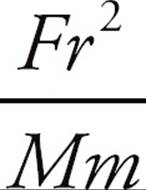 = G. The correct answer is (B).
= G. The correct answer is (B).
5. DTaking a number to the ![]() power is the same as taking the cube root of the number. Therefore, (4s)
power is the same as taking the cube root of the number. Therefore, (4s)![]() =
=  . The correct answer is (D). A shortcut is to just raise the coefficient to the power, and then use POE. Since only one answer starts with
. The correct answer is (D). A shortcut is to just raise the coefficient to the power, and then use POE. Since only one answer starts with  , that one must be correct. Another approach is to plug in a number for s and let the calculator do the hard work, though that would not help in this section since calculator use is not permitted.
, that one must be correct. Another approach is to plug in a number for s and let the calculator do the hard work, though that would not help in this section since calculator use is not permitted.
6. CSketch a picture and write the formulas for arc length and area: s = rθ, A = πr2. Start by finding the radius. If the circle has an area of 16π, then 16π = πr2; divide both sides by π to get 16 = r2. The radius must be 4. So plug in the arc length and radius into your formula: 2π = 4θ. Divide both sides by 4 to get ![]() = θ. Choice (C) is correct.
= θ. Choice (C) is correct.
7. DAccording to the question, if t = 4, then v(t) = 740. Plug 4 in for t in the answer choices and see if v(t) comes out to the target number 740. In (A) if t = 4, then v(t) = 740 − 4 = 736. Eliminate (A). In (B), if t = 4, then v(t) = 740 − 65(4) = 740 − 260 = 480. Eliminate (B). In (C), if t = 4, then v(t) = 1,000 − 195(4) = 1,000 − 780 = 220. Eliminate (C). The correct answer must therefore be (D).
8. DWhenever there are variables in the question and in the answers, think Plugging In. If s = 2, the first expression becomes 8(22) − 6(2) + 2 = 8(4) − 12 + 2 = 32 − 12 + 2 = 22. Therefore, the first expression multiplied by the second expression is 22(7) = 154. Plug in 2 for s in the answers to see which choice equals the target number of 154. Choices (A), (B), and (C) yield 26, 70, and 198 respectively. Choice (D) yields 154 and is the correct answer.
9. AWhenever the question includes variables and the answers are numbers, think Plugging In the Answers. In (A), x = 3 and y = −3. Plug these numbers into the equation to get −3 = 5(3 − 3)2 − 3. Solve the right side of the equation to get −3 = 5(0)2 − 3 or −3 = 0 − 3. The correct answer is (A). None of the other points work when plugged into the equation, so eliminate (B), (C), and (D).
10. BPlugging In would not be straightforward for this problem, given the fractions and negative numbers. A better approach would be to simplify the expressions first and then plug in or solve. Distribute the (c + 2) term to both sides of the equation. On the left side, this will cancel out with the (c + 2) term in the denominator. On the right side, make sure to distribute the (c + 2) to both terms inside the parentheses. The equation becomes 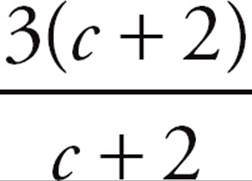 = 5(c + 2) −
= 5(c + 2) −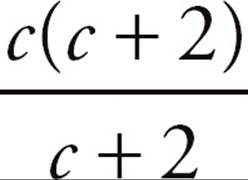 or 3 = 5c + 10 − c. Combine the c terms and subtract 10 from both sides to get −7 = 4c. Divide both sides by 4 to find that c = −
or 3 = 5c + 10 − c. Combine the c terms and subtract 10 from both sides to get −7 = 4c. Divide both sides by 4 to find that c = −![]() . The answer is (B).
. The answer is (B).
11. ASince the diameter is 10, the radius must be 5. A = πr2, so A = 25π. The shaded region takes up 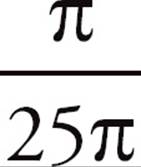 or
or  of the area, so minor arc XY must take up
of the area, so minor arc XY must take up  of the circumference. C = πd so C = 10π. Therefore, the length of minor arc XY is
of the circumference. C = πd so C = 10π. Therefore, the length of minor arc XY is  (10π), or
(10π), or 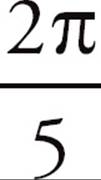 , which is (A).
, which is (A).
12. DFirst, rewrite the equations so that they are in the slope-intercept form of a line, y = mx + b, where m = slope. The first equation becomes 3y = −x + 42 or y = −![]() x + 14. The slope of this first line is therefore −
x + 14. The slope of this first line is therefore −![]() . The second equation becomes −y = −3x + 8 or y = 3x − 8. The slope of this line is therefore 3. The slopes of the two lines are negative reciprocals of each other, which means that the two lines are perpendicular to each other. The correct answer is (D).
. The second equation becomes −y = −3x + 8 or y = 3x − 8. The slope of this line is therefore 3. The slopes of the two lines are negative reciprocals of each other, which means that the two lines are perpendicular to each other. The correct answer is (D).
13. CThe graph crosses the x-axis at three distinct points. When the function is set to 0, there should be three real solutions for x. Use Process of Elimination to solve this question. Set the equation in (A) to 0 to get 0 = (x − q)2. In this equation, the root is at x = q, thereby providing only one real value for x. Eliminate (A). Set the equation in (B) to 0 to get 0 = (x − q)(x + s). The solutions for this equation are x = q or x = −s. Therefore, there are only two real solutions for x. Eliminate (B). Set the equation in (C) to 0 to get 0 = (x − r)(x + s)(x + t). The solutions for this equation are x = r, x = −s, and x = −t. Therefore, there are three real solutions for x. The correct answer is (C).
14. CWhen the quadratic is set to 0 the parabola crosses the x-axis at (−20, 0) and (20, 0). Because parabolas are symmetrical, the vertex of the parabola is at (0, 40). Plug this point into the equation to get 40 = a(0 − 20)(0 + 20). Simplify the right side of the equation to get 40 = a(−20)(20) or 40 = −400a. Solve for a to get a = −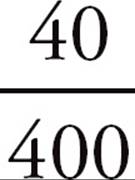 = −
= − . Therefore, the correct answer is (C).
. Therefore, the correct answer is (C).
15. BThe line shown has a negative slope. Because the graph transformation asks for the negative value of the transformed function, the resulting graph must have a positive slope. Therefore, eliminate (A). Graph transformation rules state that if the number is within the parentheses, then the graph moves left or right in the opposite direction of the sign, and if the number is outside the parentheses, the graph moves up or down in the same direction of the sign. Therefore, this line will move 2 to the right, and up 3. To follow the proper order of operations, draw out the graph transformation first, and then deal with the negative outside the brackets. Move the line two units to the right to get:
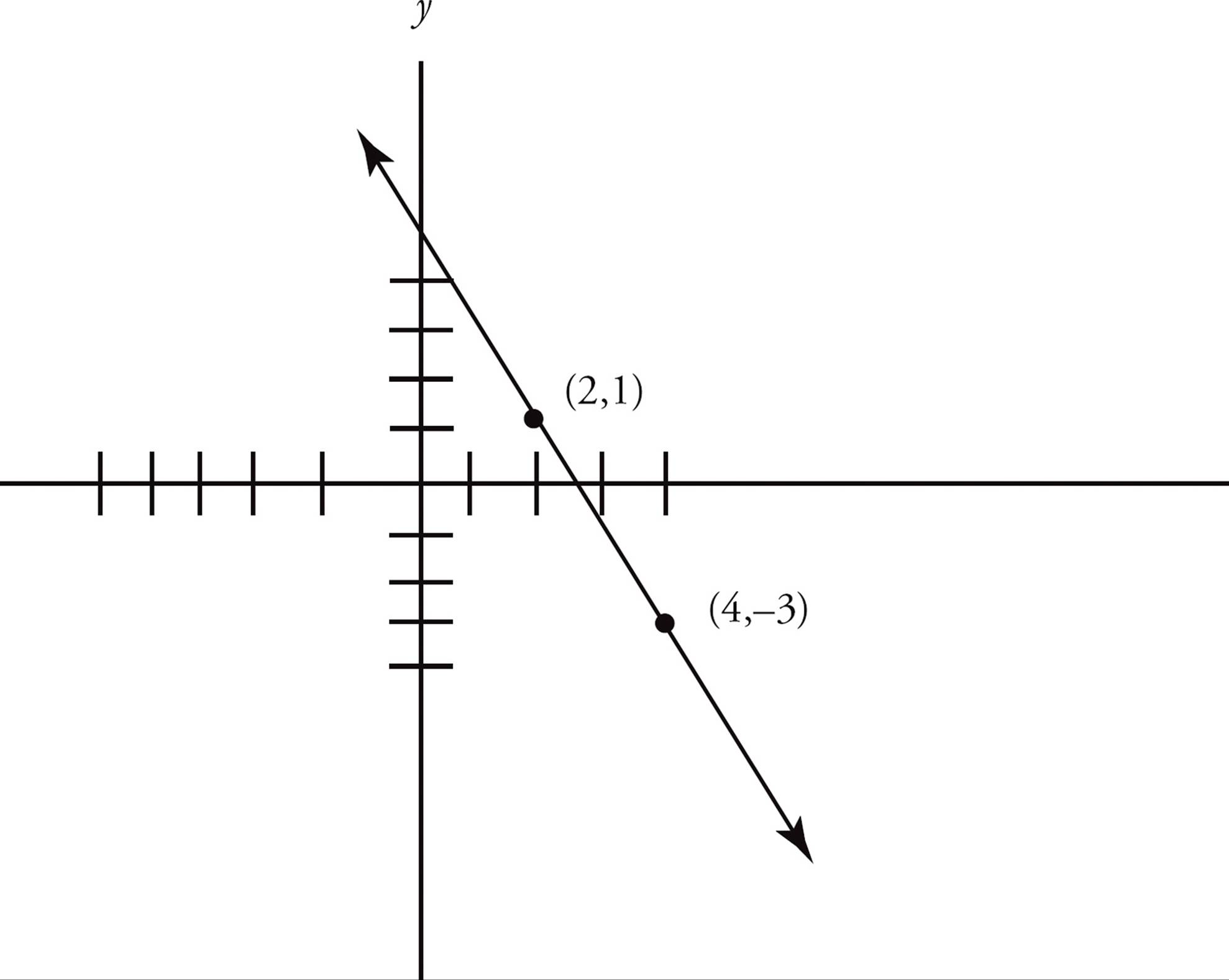
Move the line up 3 to get:
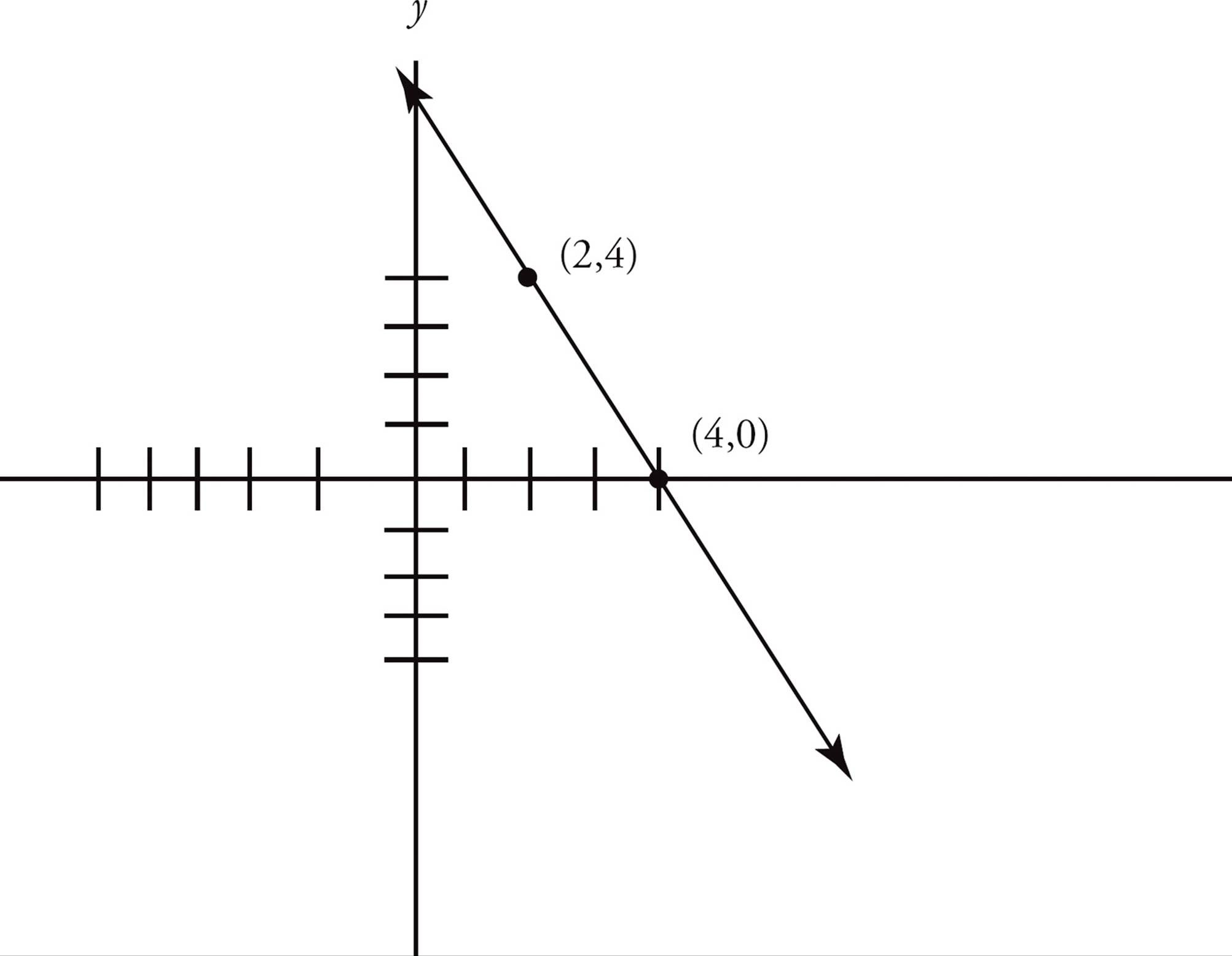
The negative sign outside the brackets means to reflect, or flip, the line over the x-axis. When the line is flipped from a positive to a negative slope, it will still go through point (4, 0). Therefore, the correct answer is (B).
16.  or 3.75
or 3.75
According to the question, h(t) = 120 and t = 8. Plug these values into the function to get 120 = ![]() a(82). Simplify the equation to get 120 =
a(82). Simplify the equation to get 120 = ![]() a(64) and 120 = 32a. Solve for a to get a = 3.75. The correct answer is 3.75.
a(64) and 120 = 32a. Solve for a to get a = 3.75. The correct answer is 3.75.
17. 2Whenever there are two equations with the same two variables, they can be solved simultaneously by adding or subtracting them. The key is to get one variable to disappear. Multiply the first equation by 3 to get 9h − 3j = 21. Stack the equations and add them.
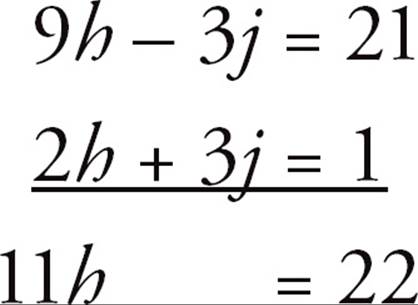
Therefore h = 2, and the correct answer is 2.
18. 36Plug in. Pick any values for the length, width, and height that will give you a volume of 24. If you say the length is 2, the height is 3, and the width is 4, then the new length, height, and width will be 1, 9, and 4 respectively. The new volume is 36. No matter what numbers you set for the initial length, width, and height, you will always get 36 for the new volume.
19.![]() or 0.833
or 0.833
Distribute the 6e on the left side of the equation and the 3e on the right side of the equation to get 6e2 + 18e = 6e2 + 12e + 5. Subtract 6e2 from both sides of the equation to get 18e = 12e + 5. Solve for eto get 6e = 5, so e = ![]() . The correct answer is
. The correct answer is ![]() .
.
20. or 0.416 or 0.417
or 0.416 or 0.417
Start by calculating the amount of vitamin C in the entire punch bowl and then calculate what the equivalent in only one cup would be. To maximize the amount of vitamin C in the punch bowl, Abeena will need to add as much orange juice, which has the highest concentration of vitamin C, as she can. Given that the punch bowl holds 9 quarts, she will pour in 6 quarts of orange juice (which is all she has) and 3 quarts of grape juice. The amount of vitamin C can be calculated as follows:

Therefore, the 9 quarts of punch contains 15 grams of vitamin C. Next, convert the quarts to cups. The question tells us that there are 4 cups in 1 quart. Therefore, 9 × 4 = 36 cups in 9 quarts. To figure out how much vitamin C is in one cup, set up the following proportion: 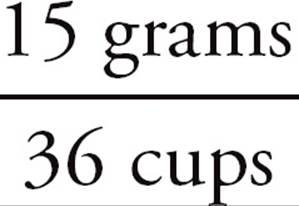 =
= 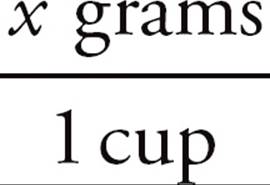 . Cross-multiply to get 36x =15, or x =
. Cross-multiply to get 36x =15, or x =  =
=  . The correct answer is
. The correct answer is  . Only reduce a fraction if it is necessary to make it fit in the grid-in box.
. Only reduce a fraction if it is necessary to make it fit in the grid-in box.
Section 4: Math (Calculator)
1. AWhenever the question asks for a specific value and the answer choices are numbers, think Plugging In the Answers. In (A), a = −0.75. Plug −0.75 in for a in the equation to get 16(−0.75)2 + 4(−0.75) − 6 = 0. Solve the left side of the equation to get 16(0.5625) + (−3) − 6 = 0, or 9 − 3 − 6 = 0. Since, this statement is true, the correct answer is (A).
2. BSo far the zoo has sold 4 × 48 = 192 tickets. To make a profit, the zoo will need to sell at least 350 − 192 = 158 additional tickets. So, z needs to be at least 158. Calculate z in each of the answers to see which gives you a value of z ≥ 158. In (A), z ≤ 350 − 4(48), so z ≤ 158. Eliminate (A). Choice (B) gives you z ≥ 158. Keep (B). Choice (C) gives you z ≥ −158. Eliminate (C). Choice (D) gives you z ≤ −158. Eliminate (D). Choice (B) is the correct answer.
3. DLine 1 shows exponential growth, because the line curves upward. Because birth rate and death rate are per 1,000 people, a birth rate higher than a death rate will result in exponential growth (because births—deaths will increase as the population increases). Immigration and emigration numbers are per year and therefore have a linear effect on the graph (as the absolute change in the population due to immigration—emigration is constant). South Zealand has more births per 1,000 than deaths per 1,000, so (D) accurately reflects line 1.
4. AYou can start with Process of Elimination. Since the number of people in the theater decreases over time, you can eliminate (D). Choices (A) and (B) are exponential functions, whereas (C) is linear. The number of people that leave the theater every 15 minutes is not constant, since it is proportional to the number of people currently in the theater; therefore, this function is not linear, and you can eliminate (C). Choice (A) must be correct since the function decreases quickly and then the number leaving every successive 15 minutes is less than the time before (10% of 250 is more than 10% of 225).
5. BCross-multiply to get 2y2 = 72. Solve for y to get y2 = 36, so y ± 6. Another way to solve would be to Plug In the Answers, since the question asks for a specific value and there are numbers in the answer choices. In (A), y = −6. Plug −6 into the equation and see if it works: 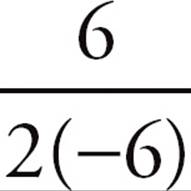 =
=  , or
, or 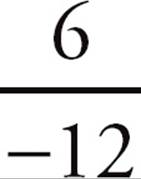 =
=  . Because this statement is true, one of the possible solutions for the equation is y = −6. Eliminate (C) and (D) because neither of these answers includes −6. According to (B), another possible value for y is 6. Plug 6 into the equation to see if it works:
. Because this statement is true, one of the possible solutions for the equation is y = −6. Eliminate (C) and (D) because neither of these answers includes −6. According to (B), another possible value for y is 6. Plug 6 into the equation to see if it works: 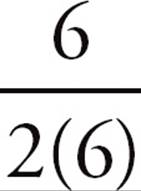 =
=  , or
, or  =
=  . Since this statement is also true, the correct answer is (B).
. Since this statement is also true, the correct answer is (B).
6. CThe 36-year-old runner ran under 3:00:00 when almost 3:30:00 is expected. The 39-year-old runner ran slightly above 3:00:00 when 3:30:00 is expected. The 41-year-old runner ran slightly above 3:00:00 when about 3:45:00 was expected. Therefore, three runners ran at least 15 minutes faster than predicted, which matches (C). If you chose (B), you may have based your choice on the number of runners who ran more than 15 minutes slower than their predicted time.
7. CAccording to the table, the relative investment in wind resources in 2007 was 0.40 of the total 1.00. Probability is defined by the number of things that fit the requirements divided by the total number of things. In this case, that would be 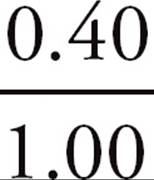 . You don’t need to worry about the actual dollar values, because these numbers both relate to the same total of $75 million. You do, however, need to simplify this fraction. You can multiply it by
. You don’t need to worry about the actual dollar values, because these numbers both relate to the same total of $75 million. You do, however, need to simplify this fraction. You can multiply it by  to get
to get  , which then reduces to
, which then reduces to ![]() . You could also divide it on your calculator to get 0.4, and then divide each fraction in the answer choices to see which one is also equal to 0.4. Either way, the correct answer is (C).
. You could also divide it on your calculator to get 0.4, and then divide each fraction in the answer choices to see which one is also equal to 0.4. Either way, the correct answer is (C).
8. BExamine each answer choice and use Process of Elimination. For (A), the 2007 investment in biofuels was 0.31 out of 1.00, or about one-third of the total, according to the chart. The total that year was $75 million, so the Ballpark value would be about $25 million. The $50 million value in (A) is too high, so eliminate it. Choice (B) refers to percents, but the chart is in “relative” investment. If the 2007 relative investment in wind is 0.40 out of 1.00, it is equivalent to 40% of the total. The wind investment in 2017 is projected to be .32 or 32% of the total, which is a decrease of 8%. Check out (C) and (D) just to be certain. For fuel cells, the percent of the total is projected to double, but the total in 2017 is projected to be much higher. So the total dollar amount invested in wind in 2017 will be much more than double the 2007 investment. For (D), the top three energy types—biofuels. wind, and solar—are projected to be more equally invested in for 2017 than they were in 2007, so (D) is the opposite of what the chart shows. Eliminate (C) and (D), and choose (B).
9. CWhenever there are variables in the question and in the answers, think Plugging In. If m = 10, then Monster Truck Inc., receives a down payment of $3,200 plus 10 months’ worth of monthly payments. This can be calculated as 3,200 + 10(380) = 3,200 + 3,800 = $7,000. Plug in 10 for m in the answers to see which function equals 7,000. Choice (A) becomes f(m) = 380 + 3,200(10) = 380 + 32,000 = 32,380. Eliminate (A). Choice (B) becomes f(m) = 3,200 + 36(10) = 3,200 + 360 = 3,560. Eliminate (B). Choice (C) becomes f(m) = 3,200 + 380(10) = 3,200 + 3,800 = 7,000. Keep (C), but check (D) just in case it also works. Choice (D) becomes f(m) = 10,480 − 380(10) = 10,480 − 3,800 = 6,680. Eliminate (D). The correct answer is (C).
10. APlugging In the point (6, −5) in the answer choices could work, but it will likely make more than one equation true. The x-intercept is where the line crosses the x-axis, at the point where y = 0. Therefore, one point on the line is (3, 0). The choices are all in the slope-intercept form, y = mx + b, where m is the slope. To find the correct answer, calculate the slope of the line with the two points known to be on the line. The slope of a line is determined by the equation 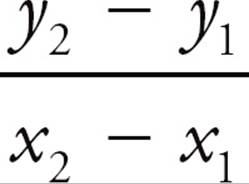 . Therefore, the slope of the line shown can be calculated as follows:
. Therefore, the slope of the line shown can be calculated as follows: 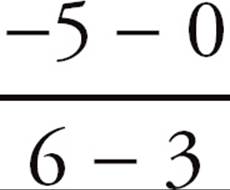 =
=  . Only (A) has a slope of
. Only (A) has a slope of  , so that is the correct answer.
, so that is the correct answer.
11. DThere are 12 inches in one foot, so a reel is 12 × 1,000 = 12,000 inches long. Set up a proportion to determine how many frames per reel: 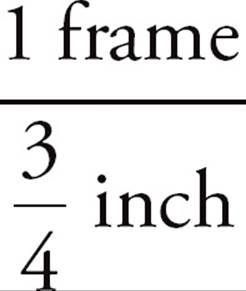 =
= 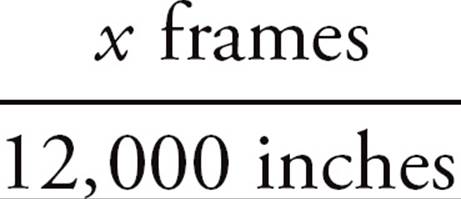 . Cross-multiply to get
. Cross-multiply to get ![]() x = 12,000. Divide both sides by
x = 12,000. Divide both sides by ![]() to get x = 16,000 frames per reel. Next, find the number of frames the film requires. Convert the time to seconds. There are 60 minutes in an hour, so 2 hours and 47 minutes is equal to (2 × 60) + 47 = 167 minutes. There are 60 seconds in a minute, so there are 60 × 10,020 seconds in this film. If each second consists of 24 frames, then there are 24 × 10,020 = 240,480 frames in this film. To determine the number of reels, divide by the number of frames per reel:
to get x = 16,000 frames per reel. Next, find the number of frames the film requires. Convert the time to seconds. There are 60 minutes in an hour, so 2 hours and 47 minutes is equal to (2 × 60) + 47 = 167 minutes. There are 60 seconds in a minute, so there are 60 × 10,020 seconds in this film. If each second consists of 24 frames, then there are 24 × 10,020 = 240,480 frames in this film. To determine the number of reels, divide by the number of frames per reel: 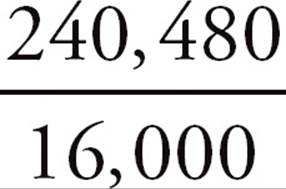 = 15.03 reels. Because 15 reels does not hold quite enough frames, the film requires 16 reels, which is (D).
= 15.03 reels. Because 15 reels does not hold quite enough frames, the film requires 16 reels, which is (D).
12. CSo far, Hua has received 1,350 + 900 = 2,250 surveys. Hua needs 3,800 − 2,250 = 1,550 additional surveys. Given that Hua receives 1 completed survey for every 5 she sends out, she will need to send out at least 5 × 1,550 = 7,750 surveys. Therefore, the correct answer is (C).
13. BSince line AE is perpendicular to the line containing segment AB and the line containing segment DE, these two lines must be parallel. Therefore, ∠ABC is equal to ∠CDE because they are both small angles created by a line crossing two parallel lines. Since ∠DCE and ∠ACB are opposite each other, they must be equal as well, so these are two similar right triangles. The question also tells you that Cis the midpoint of BD, which means that BC and CD are equal. When you have two sides and the included angle of one triangle congruent to two sides and the included angle of a second triangle, you know that the triangles are congruent. This means that AB = DE and AC = CE. Lastly, the question states that AC = DE, which means that AB = AC, and these must be isosceles right triangles. Angle ABC is therefore 45°, and n, which is opposite ∠ABC, must be 45° as well. The correct answer is (B).
14. DStart with the easier equation and use Process of Elimination. The easier equation is related to the total number of turkey and bread slides, t + b, on the 4 platters. According to the question, each platter contains 100 slices, so the 4 platters contain 100 × 4 = 400 slices. Therefore, one of the equations in the correct answer must be t + b = 400. Eliminate (A) and (B) since neither of these answers contains that equation. The second equation deals with the weight of the slices. According to the problem, the slices on each platter weigh 160 ounces. Therefore, the total weight of the slices on all 4 platters is 160 × 4 = 640. Eliminate (C) because the total is wrong in the weight equation. The correct answer is (D).
15. DWhenever there are two equations with the same two variables, they can be solved simultaneously by adding or subtracting them. The key is to get one variable to disappear. Multiply the second equation by −2, to get 6a − 2z = 20. Stack the two equations and add them.
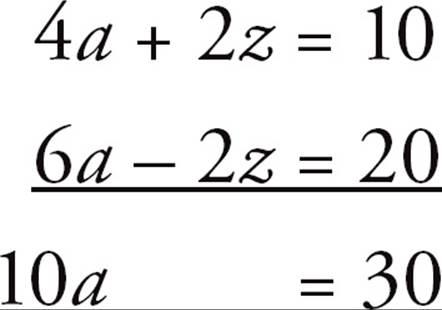
Therefore, the correct answer is (D). Be careful of (C)—the question did NOT ask for the value of a.
16. BWe know that Isabella starts with $1,000 in her account, so this eliminates (D). She is earning money from the interest, so the line must have a positive slope, eliminating (C), which has a constant slope. The two best choices are (A) and (B), but in (A) Isabella’s money doesn’t begin to increase until the 5-year mark, which doesn’t make sense—thus (B) is the best choice.
17. AFind a point on the graph and plug that point into each of the answers to see which equation works. The graph goes through the point (0, −6). Using that point, (A) becomes −6 = 02 − 0 −6. Solve the right side of the equation to get −6 = −6. Keep (A), but check the remaining answer choices just in case. Choice (B) becomes −6 = 0 + 0 −12. Solve the right side of the equation to get −6 = −12. This is not true, so eliminate (B). Choice (C) becomes −6 = 02 + 6(0) + 9. Solve the right side of the equation to get −6 = 9. Eliminate (C). Choice (D) becomes −6 = 02 + 5(0) + 6. Solve the right side of the equation to get −6 = 6. Eliminate (D). The correct answer is (A).
18. AThe key to this problem is understanding that the three friends plan to climb an equal number of stairs. Start with the building for which we know the number of stairs. The friends are each planning to climb 3,639 ÷ 3 = 1,213 stairs. Since 1,213 must be a part of the correct answer, eliminate (B) and (D). Given that Dalia will complete only 75% of her goal, Dalia’s total must be multiplied by 75% or 0.75. This eliminates (C). The correct answer is (A).
19. CLet’s break this question into smaller pieces. First, to find the number of U.S. residents who visit European countries every year, we will need to determine how many residents hold passports: 36% of 315 million = 0.36 × 315 = 113.4 million. Next, we can calculate how many of those passport-holders travel internationally each year: 8% of 113.4 million = 0.08 × 113.4 = 9.072 million. Finally, we can calculate how many of those international travelers visit Europe each year: 10% of 9.072 million = 0.1 × 9.072 = 0.9072 million. 0.9072 million is equivalent to 907,200, which is (C). The percentage calculations can also be done in one step: 0.1 × 0.08 × 0.36 × 315 = 0.9072 million.
20. AGiven that all of the answer choices are possible values for y, plug in the answers. In (A), y = x − 6. Plug this value into (x + 2)y2 to get (x + 2)(x − 6)(x − 6). Multiply the last two factors together to get (x + 2)(x2 − 12x + 36). Multiply the two resulting factors together to get x3 − 12x2 + 36x + 2x2 − 24x + 72. Combine like terms to get x3 − 10x2 + 12x + 72. This is the same as the third degree polynomial in the question. Therefore, the correct answer is (A).
21. CIn 2010, as counted, there were 354 + 225 + 757 = 1,336 elephants in Wakanda. If the margin of error was 17.4, the lowest population of elephants that could fit within the margin of error would be 1,336 − 17.4 = 1,318.6 elephants. Because there cannot be fractional elephants, 1,319 is the smallest value that would be within the margin of error.
22. CStart by using Process of Elimination to eliminate (D) because the entire question is about finding the height, and (D) has nothing to do with height. The difference between the left and middle stacks is 2 stacked sawhorses. The height added to the stack of sawhorses by adding two to the stack can therefore be calculated as 92 − 60 = 32. Therefore, the added height of one stacked sawhorse is 32 ÷ 2 = 16. From this information, keep subtracting the 16 inches added to the top of a stack by each additional sawhorse until you get down to one sawhorse in the stack. If three sawhorses are 60 inches tall, two will be 60 − 16 = 44 inches tall and one sawhorse will be 44 − 16 = 28 inches tall. Choice (A), the height of one sawhorse, can now be eliminated. Another way to think about the height added to the stack of sawhorses by each additional sawhorse is to think of it as the distance between the top of one sawhorse and the top of the next. Since all the sawhorses are the same height, this distance is also the distance from the bottom of one sawhorse to the bottom of the next. Since this distance is 16, eliminate (B). Therefore, the answer must be (C). The height of one sawhorse is 28, which is b + c, so the overlap, c, is 28 − 16 = 12.
23. BRemember that sin a = cos b means that a and b are complementary angles. Therefore, the two triangles are similar and cos a = sin b as well and you can set up the following equation: ![]() =
= 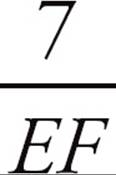 Now that you have solved for EF (11.2), you can use the Pythagorean theorem (a2 + b2 = c2) to solve for DF. 11.22 = 72 + DF2. The correct answer is (B). Alternatively, you could have used the Pythagorean theorem to solve for BC and then set up a proportion between the similar triangles. Just make sure that you recognize that AC corresponds to DE rather than DF.
Now that you have solved for EF (11.2), you can use the Pythagorean theorem (a2 + b2 = c2) to solve for DF. 11.22 = 72 + DF2. The correct answer is (B). Alternatively, you could have used the Pythagorean theorem to solve for BC and then set up a proportion between the similar triangles. Just make sure that you recognize that AC corresponds to DE rather than DF.
24. BFirst, solve for Rick’s hourly rate and Shane’s hourly rate. Since Work = Rate × Time, Rick produces 8 widgets per hour (28 widgets ÷ 3.5 hours without breaks) and Shane produces 27 ÷ 3.5 = 6 widgets per hour. Now plug in. Since you know they have a combined rate of 14 widgets per hour, choose a total amount that is divisible by 14. Let’s say they were each assigned 14. This means that the total produced is 28, and at a total rate of 14 per hour. Therefore, it takes them 2 hours to finish. During this time Rick would produce 16 widgets and Shane would produce 12 widgets. Therefore, Rick must have done 2 of Shane’s originally assigned 14 widgets, which is 14.3% of 14. This matches (B).
25. DTo answer this question, you need the formula for percent change: 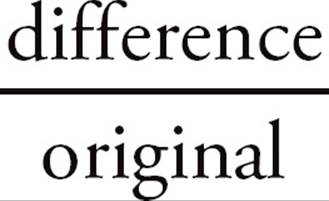 · 100. For choice (A), plug in a difference of about 200,000 and an original of about 1,000,000:
· 100. For choice (A), plug in a difference of about 200,000 and an original of about 1,000,000: 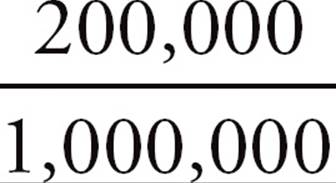 · 100. This simplifies to 20%. For (B), plug in a difference of about 200,000 and an original of about 900,000:
· 100. This simplifies to 20%. For (B), plug in a difference of about 200,000 and an original of about 900,000: 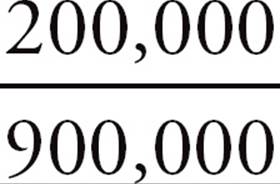 · 100. This simplifies to about 22%, so you can eliminate (A). Choice (C) is incorrect because the Sylvilagus brasiliensis population increased during that time. If you chose (C), you may have calculated the percent change of the Chrysocyon brachyurus population. For (D), plug in a difference of about 200,000 and an original of about 800,000:
· 100. This simplifies to about 22%, so you can eliminate (A). Choice (C) is incorrect because the Sylvilagus brasiliensis population increased during that time. If you chose (C), you may have calculated the percent change of the Chrysocyon brachyurus population. For (D), plug in a difference of about 200,000 and an original of about 800,000: 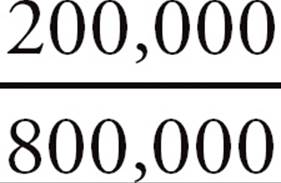 · 100. This simplifies to approximately 31%. This is the greatest percent decrease; therefore, (D) is correct.
· 100. This simplifies to approximately 31%. This is the greatest percent decrease; therefore, (D) is correct.
26. CStart by setting the two equations equal to each other to get x2 − 2x = 2x − 1. Manipulate the equation into the ax2 + bx + c = 0 form, which is x2 − 4x + 1 = 0. Use the quadratic equation, which states that x = 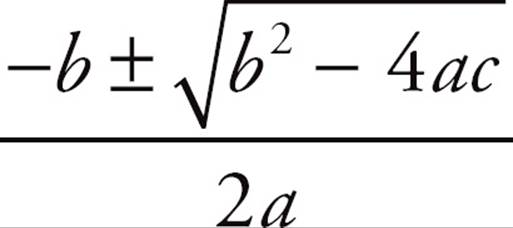 to get x =
to get x =  . Solve for x to get x =
. Solve for x to get x = 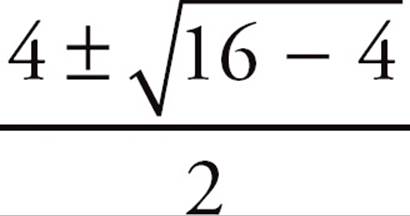 , then x =
, then x = 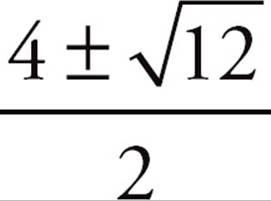 or x =
or x = 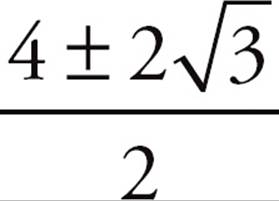 , so x = 2 ±
, so x = 2 ± . The greater of the two possible values for x is x = 2 +
. The greater of the two possible values for x is x = 2 +  . Therefore, the correct answer is (C).
. Therefore, the correct answer is (C).
27. BCosecant is 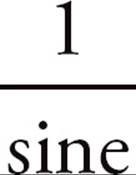 or
or 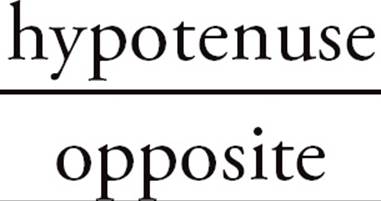 . Make a right triangle and plug in for the side lengths. Because
. Make a right triangle and plug in for the side lengths. Because 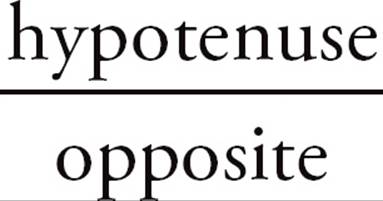 , make the hypotenuse 1.66 and the side opposite the angle measure θ equal to 1. Use the Pythagorean theorem to solve for the missing side: 12 + x2 = 1.662; 1 + x2 = 2.7556; x2 = 1.7556; x ≈1.32. Make this the other leg of the triangle. To find tan θ, use
, make the hypotenuse 1.66 and the side opposite the angle measure θ equal to 1. Use the Pythagorean theorem to solve for the missing side: 12 + x2 = 1.662; 1 + x2 = 2.7556; x2 = 1.7556; x ≈1.32. Make this the other leg of the triangle. To find tan θ, use 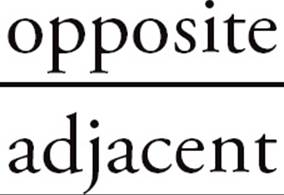 :
: 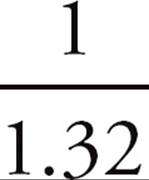 , which is (B).
, which is (B).
28. DIf two patients are added to the trial, there will be 12 total patients. If the mean height of 12 patients is 169 cm, then the 12 patients have a total height of 12 × 169 = 2,028 cm. The total height of the first 10 patients is 184 + 176 + 181 + 157 + 168 + 154 + 148 + 165 + 190 + 162 = 1,685 cm, so the two new patients must have a total height of 2,028 − 1,685 = 343 cm. Add up the heights and eliminate any choice that does not equal 343. Only (D) works.
29. DPlugging in the given point to see which equation is true is not easy on this one, since both values have weird decimals. The answer choices are also likely written so that more than one is true for that point, so try to find another point on the line. The x-intercept of a line is where the line crosses the x-axis. At that point, the value of y is 0. Therefore, (2, 0) is also a point on the line. Plug this point into the answers, since it is easier to calculate. If it works in more than one equation, plugging in the ugly point will determine the correct answer, which must work for both points work. Plug point (2, 0) into (A) to get 0 + 5.9 = 2.5(2). Solve both sides of the equation to get 5.9 = 5. Eliminate (A). Plug (2, 0) into (B) to get 4(0) + 12(2) = 29.1. Solve both sides of the equation to get 4 + 24 = 29.1, or 28 = 29.1. Eliminate (B). Plug (2, 0) into (C) to get 6(0) + 27.15 = 12(2). Solve both sides of the equation to get 0 + 27.15 = 24. Since this is clearly not a true statement, eliminate (C). Plug (2, 0) into (D) to get 10(0) − 13(2) = −26. Solve both sides of the equation to get −26 = −26. Since (D) is the only answer for which the point (2, 0) works, the correct answer is (D).
30. BWhenever there are variables in the question and in the answers, think Plugging In. If P0 = 4, k = 2, and t = 3, then P = (4)(10)6 = 4,000,000. Plug these values into the answer choices to see which answer works. Choice (A) becomes 3 = 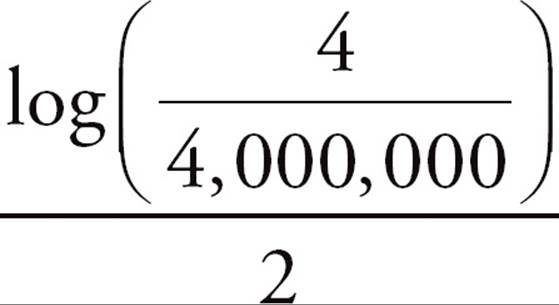 . Simplify the right side of the equation to get 3 =
. Simplify the right side of the equation to get 3 = 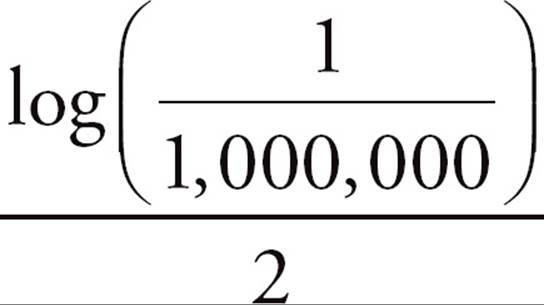 , then 3 =
, then 3 =  , and finally 3 = −3. This isn’t true, so eliminate (A). Choice (B) becomes 3 =
, and finally 3 = −3. This isn’t true, so eliminate (A). Choice (B) becomes 3 = 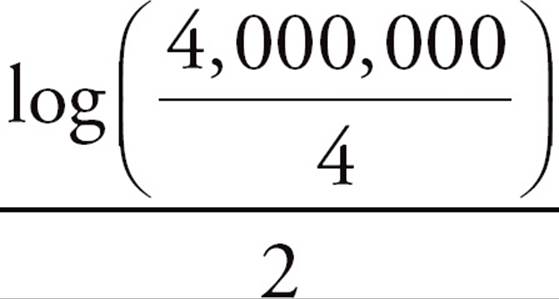 . Simplify the right side of the equation to get 3 =
. Simplify the right side of the equation to get 3 = 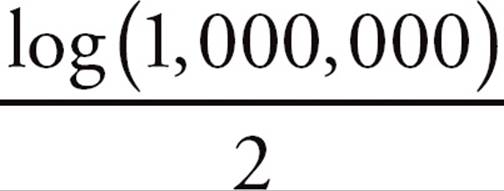 , then 3 =
, then 3 = ![]() , and finally 3 = 3. Keep (B), but check the remaining answer choices just in case. Choice (C) becomes 3 =
, and finally 3 = 3. Keep (B), but check the remaining answer choices just in case. Choice (C) becomes 3 =  . Simplify the right side of the equation to get 3 =
. Simplify the right side of the equation to get 3 = 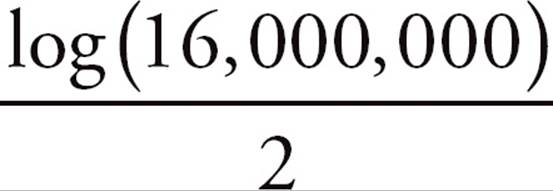 , or 3 ≈ 3.6. Eliminate (C). Choice (D) becomes 3 = 2log
, or 3 ≈ 3.6. Eliminate (C). Choice (D) becomes 3 = 2log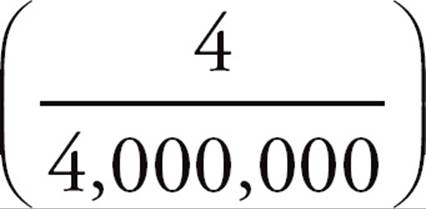 . Simplify the right side of the equation to get 3 = 2log
. Simplify the right side of the equation to get 3 = 2log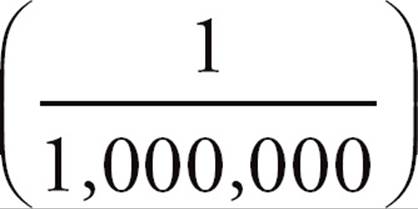 , then 3 = 2(−6), and finally 3 = −12. Eliminate (D). The correct answer is (B).
, then 3 = 2(−6), and finally 3 = −12. Eliminate (D). The correct answer is (B).
31. 48Set up a proportion: 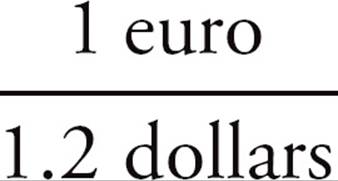 =
= 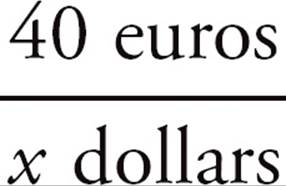 . Cross-multiply and get x = 1.2 × 40 = 48.
. Cross-multiply and get x = 1.2 × 40 = 48.
32. 558During the summer the ice cream vendor sells an average of 2(50) − 7 = 93 popsicles per day. Over 6 summer days, 93 × 6 = 558 popsicles are sold. The correct answer is 558.
33.![]() or 3.5
or 3.5
First, get rid of the decimals in the first equation by multiplying the first equation through by 10 to get 13g + 17h = 50. In the second equation, move all the variables to the left of the equal sign to get −13g + 3h = 20. Whenever there are two equations with the same two variables, they can be solved simultaneously by adding or subtracting them. The key is to get one variable to disappear. Stack the equations on top of each other and add them.
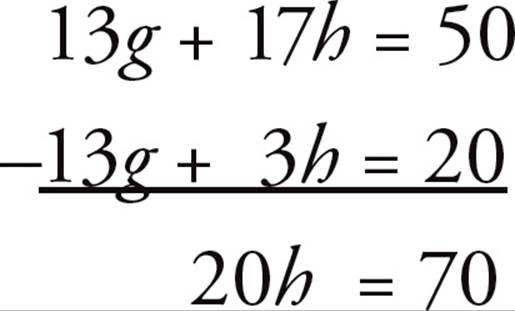
Therefore, h =  . Because this number is too large to grid in, either reduce the fraction to
. Because this number is too large to grid in, either reduce the fraction to ![]() , or convert the fraction to the decimal 3.5.
, or convert the fraction to the decimal 3.5.
34. 16To find the percent of registered Democrats planning to vote for Candidate A, divide the number of Democrats planning to vote for Candidate A by the total number of registered Democrats: 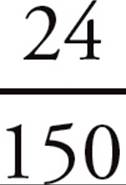 = 0.16 = 16%, which makes 16 the correct answer.
= 0.16 = 16%, which makes 16 the correct answer.
35. 30Since no picture has been provided, start by drawing the picture. To do so, change each of the equations into the slope-intercept form of an equation y = mx + b, where m is the slope and b is the y- intercept. The second equation becomes 3y ≥ 2x − 12, or y ≥ ![]() x − 4. The third equation becomes 5y ≤ −2x + 20, or y ≤ −
x − 4. The third equation becomes 5y ≤ −2x + 20, or y ≤ − ![]() x + 4. The ≥ sign in the second equation means that everything above the line should be shaded, and the ≤ sign in the third equation means that everything below that line should be shaded. To graph the first equation x ≥ 0, shade everything to the right of the y-axis. The resulting picture should look like this:
x + 4. The ≥ sign in the second equation means that everything above the line should be shaded, and the ≤ sign in the third equation means that everything below that line should be shaded. To graph the first equation x ≥ 0, shade everything to the right of the y-axis. The resulting picture should look like this:
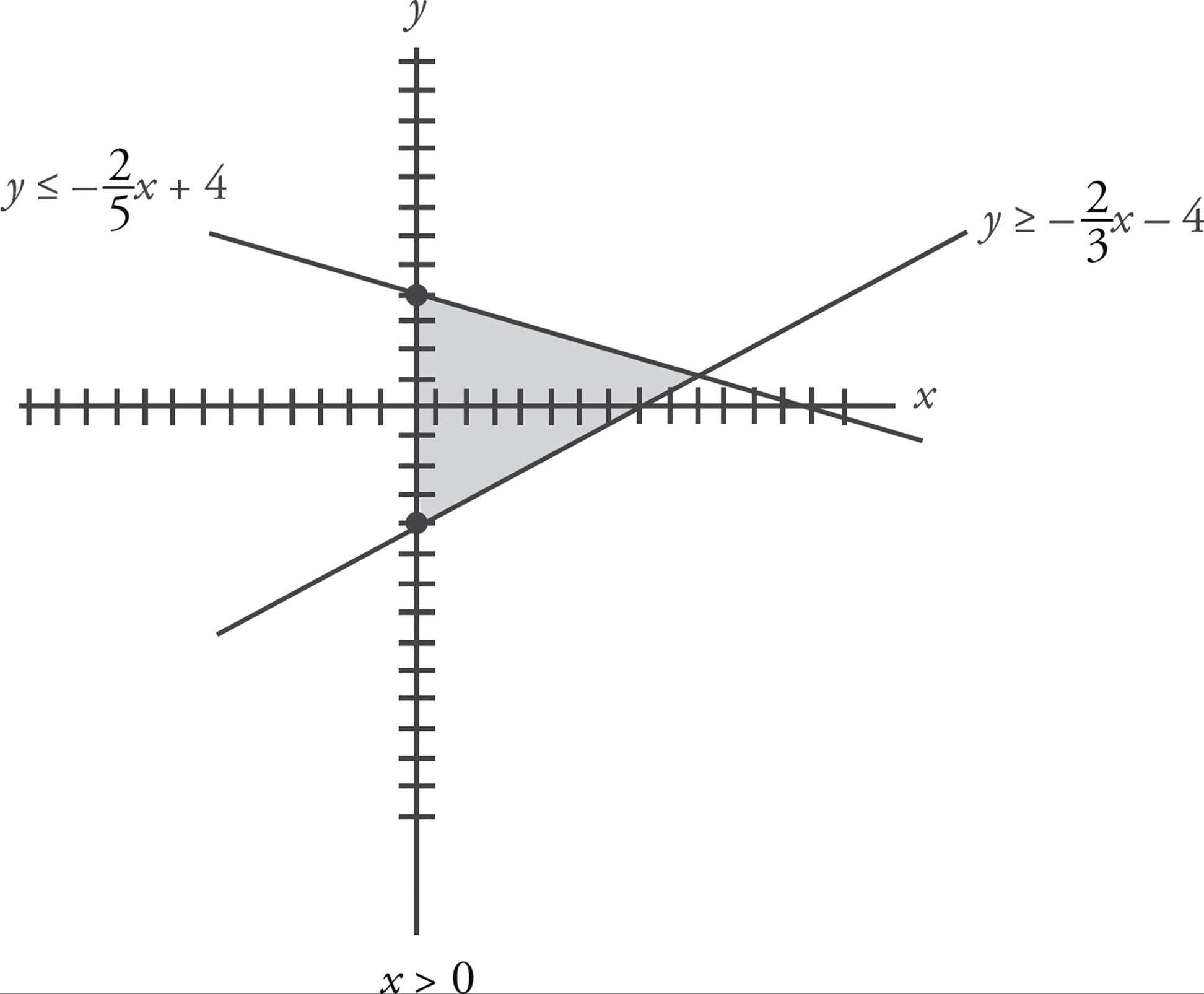
The formula for the area of a triangle is A = ![]() b × h. It is easiest to think of the side that is along the y-axis as the base. That side goes from a y-coordinate of 4 to −4, for a length of 8. The height of the triangle is the x-coordinate of the point where the two slanted lines meet; set the two equations equal to find it. Start with
b × h. It is easiest to think of the side that is along the y-axis as the base. That side goes from a y-coordinate of 4 to −4, for a length of 8. The height of the triangle is the x-coordinate of the point where the two slanted lines meet; set the two equations equal to find it. Start with ![]() x − 4 = −
x − 4 = − ![]() x + 4 and multiply everything by 15 to get 10x − 60 = − 6x + 60. Then add 6x and 60 to both sides to get 16x = 120, so x = 7.5, and the height is 7.5. The resulting figure should look like this:
x + 4 and multiply everything by 15 to get 10x − 60 = − 6x + 60. Then add 6x and 60 to both sides to get 16x = 120, so x = 7.5, and the height is 7.5. The resulting figure should look like this:
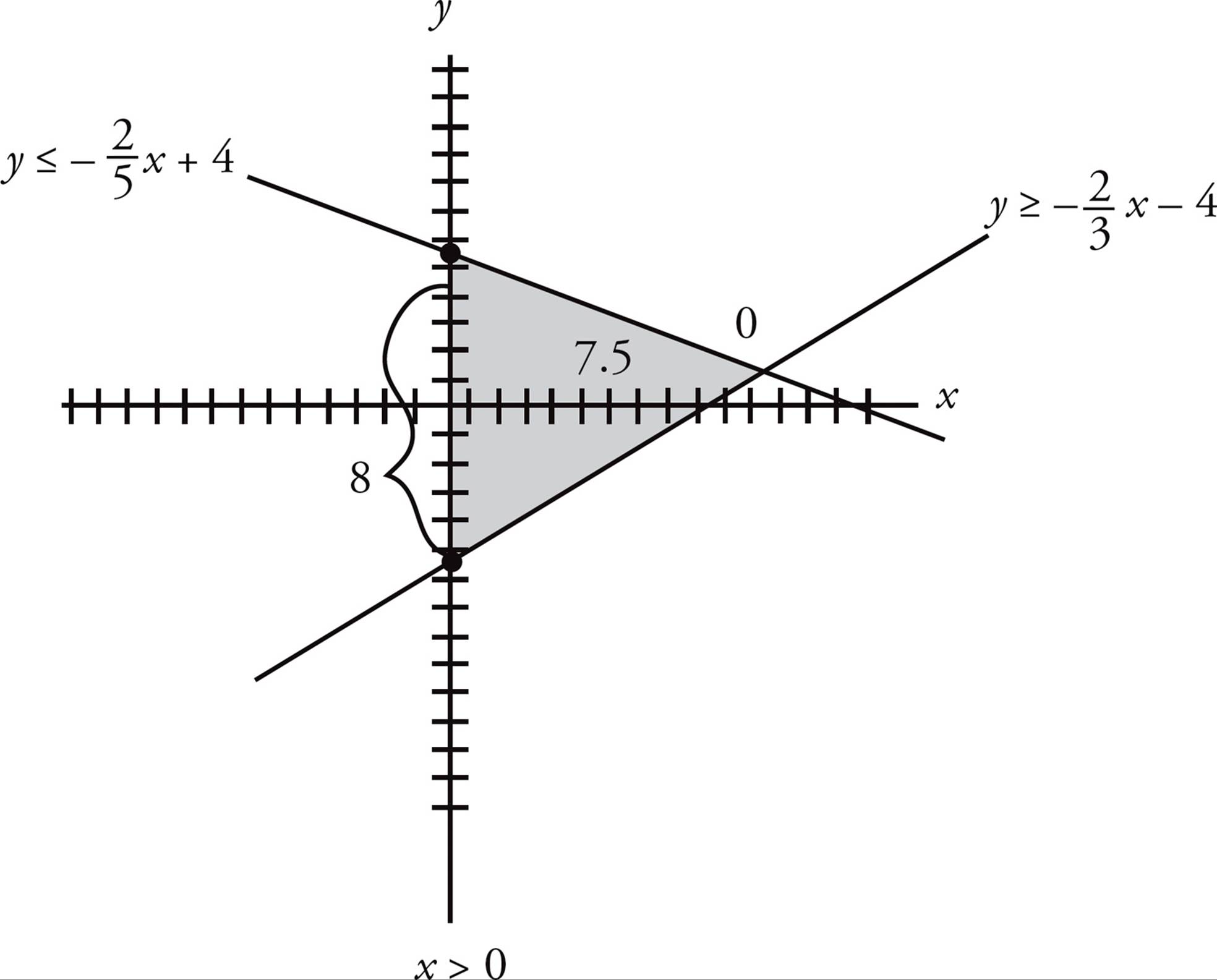
Plug the measurements for the base and the height into the area formula to get A = ![]() (8)(7.5) = 30. The correct answer is 30.
(8)(7.5) = 30. The correct answer is 30.
36. 0Start by multiplying the terms together. To multiply (x2 + 2x − 3)(2x + 5), multiply each term in the left parenthesis by each term in the right parenthesis to get 2x3 + 5x2 + 4x2 + 10x − 6x − 15. Combine like terms to get 2x3 + 9x2 + 4x − 15. To multiply (x + 1)(x − 1)(x + 3), do one set of parentheses first; then multiply that product by the remaining parenthesis. You may notice that (x + 1)(x − 1) is a common quadratic, which equals x2 − 1. Then you need to multiply x2 − 1 by (x + 3). As you did before, multiply each term in the first parenthesis by each term in the second to get x3 + 3x2 − x − 3. Now you can do (2x3 + 9x2 + 4x − 15) − (x3 + 3x2 − x − 3). It is easiest to distribute the negative sign into the second parenthesis: (2x3 + 9x2 + 4x − 15) + (−x3 − 3x2 + x + 3). Now you can combine like terms to get x3 + 6x2 + 5x − 12. This is in the form ax3 + bx2 + cx + d, so a = 1, b = 6, c = 5, and d = −12. This means a + b + c + d = 1 + 6 + 5 + (−12) = 0.
37. 195Use the definition of inverse proportion: x1 y1 = x2 y2. Plug in 1.5 for x1, 260 for y1, 2 for x2, and solve for y2: (1.5)(260) = (2)(y2); 390 = 2y2. Divide both sides by 2, and you find y2 = 195.
38. 15Start by converting the qualifying distance of 68.58 meters into yards. Set up a proportion: 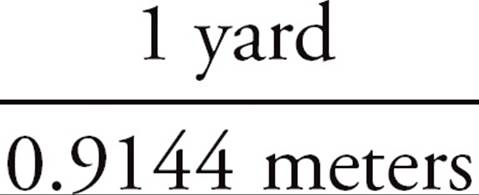 =
= 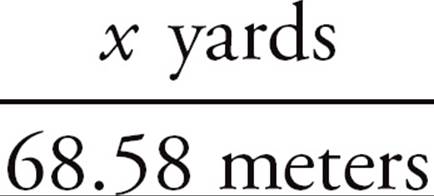 . Cross-multiply to get 0.9144x = 68.58. Divide both sides by 0.9144 to find that the qualifying distance is 75 yards. If his current best is 60 yards, he needs to throw 75 − 60 = 15 more yards.
. Cross-multiply to get 0.9144x = 68.58. Divide both sides by 0.9144 to find that the qualifying distance is 75 yards. If his current best is 60 yards, he needs to throw 75 − 60 = 15 more yards.